Rank 2 Sell - pt3-3 to pt4-2
Rank 2 Sell - pt3-3 to pt4-2 - Part 1

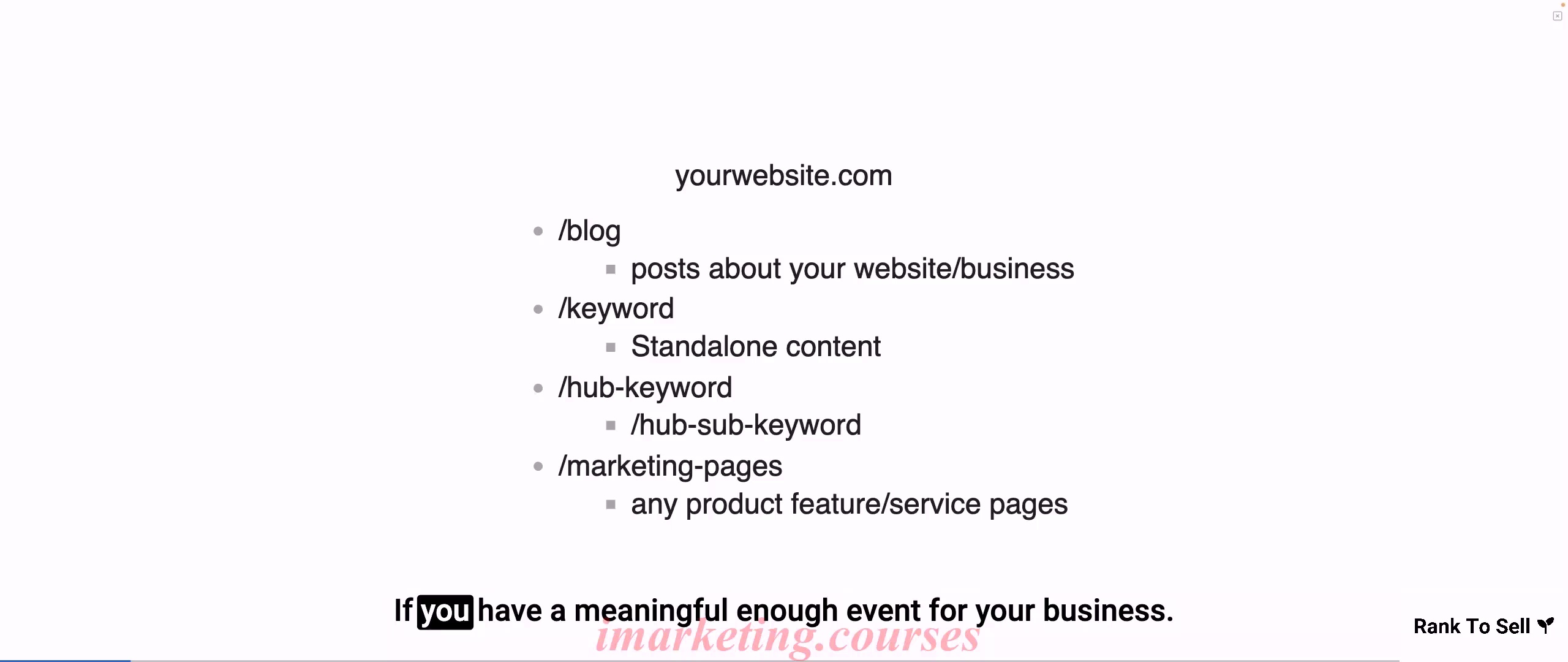
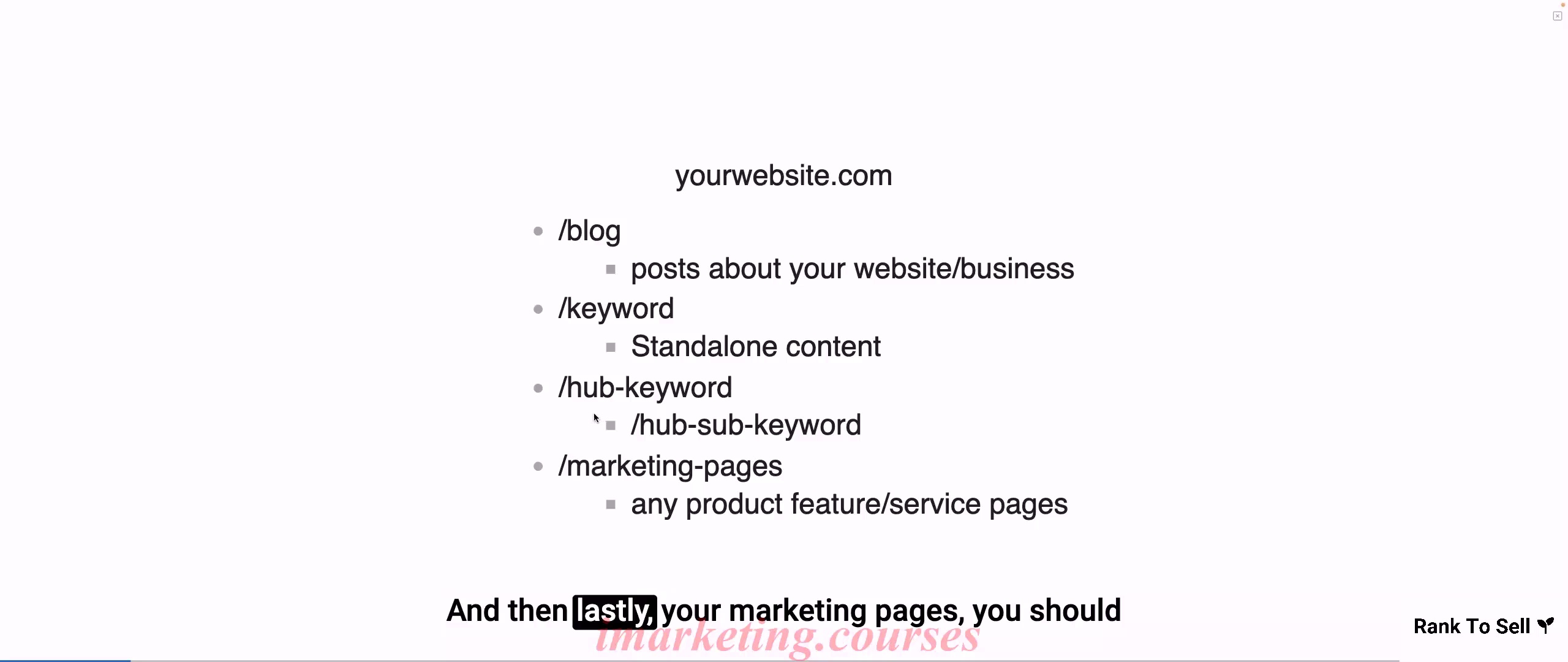
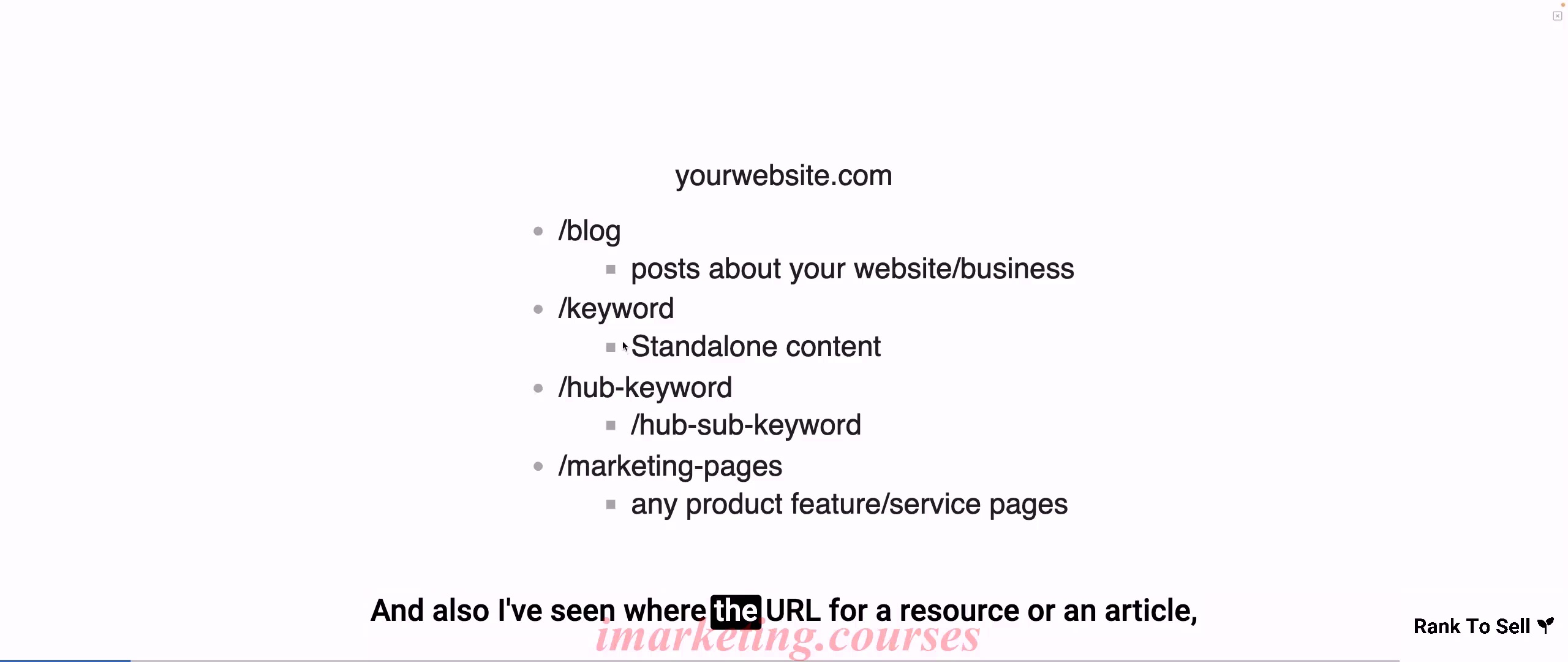
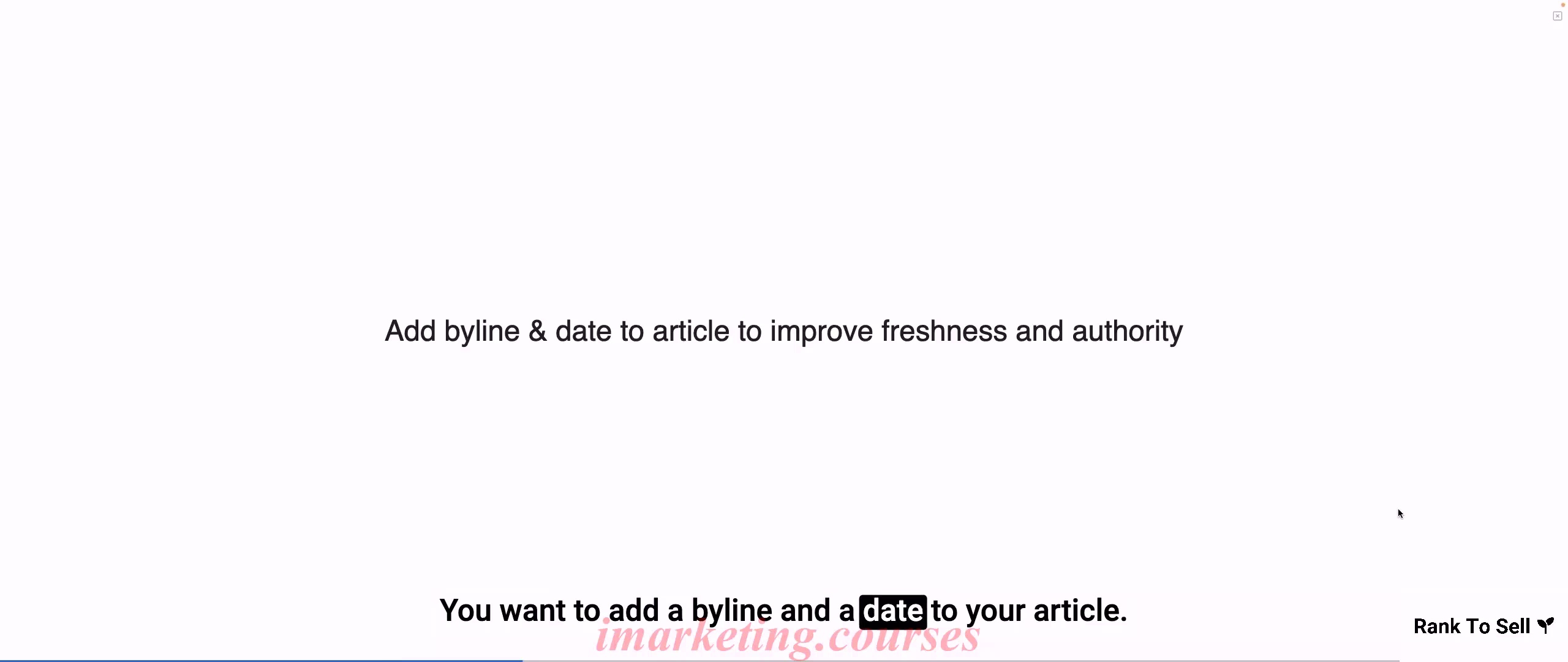
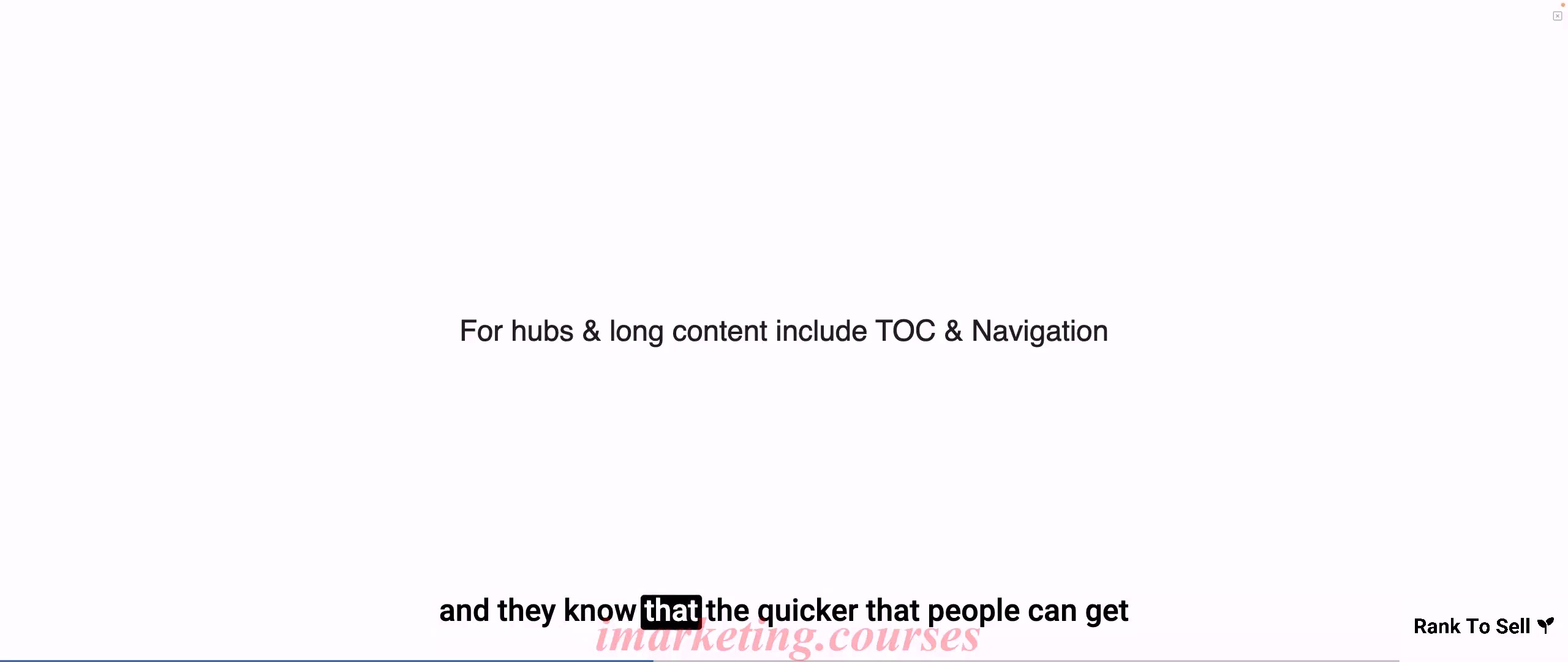
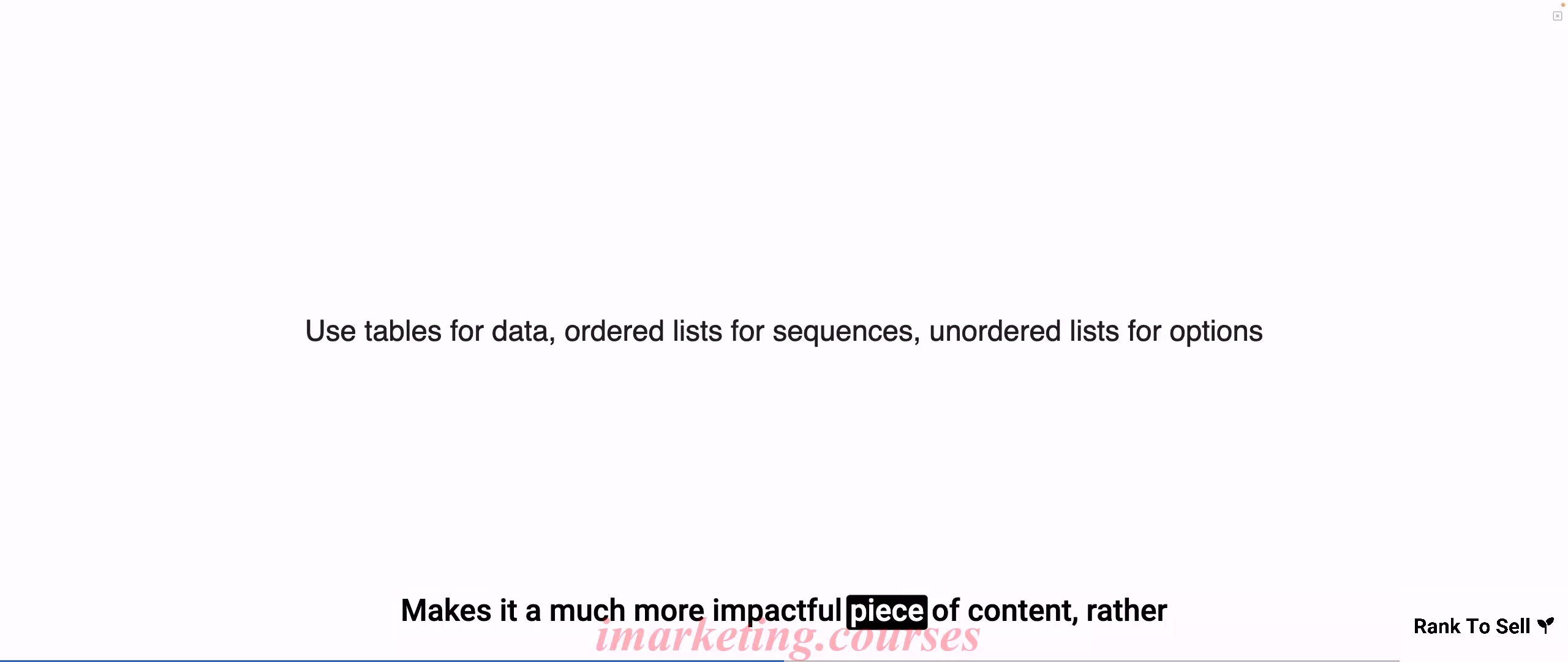
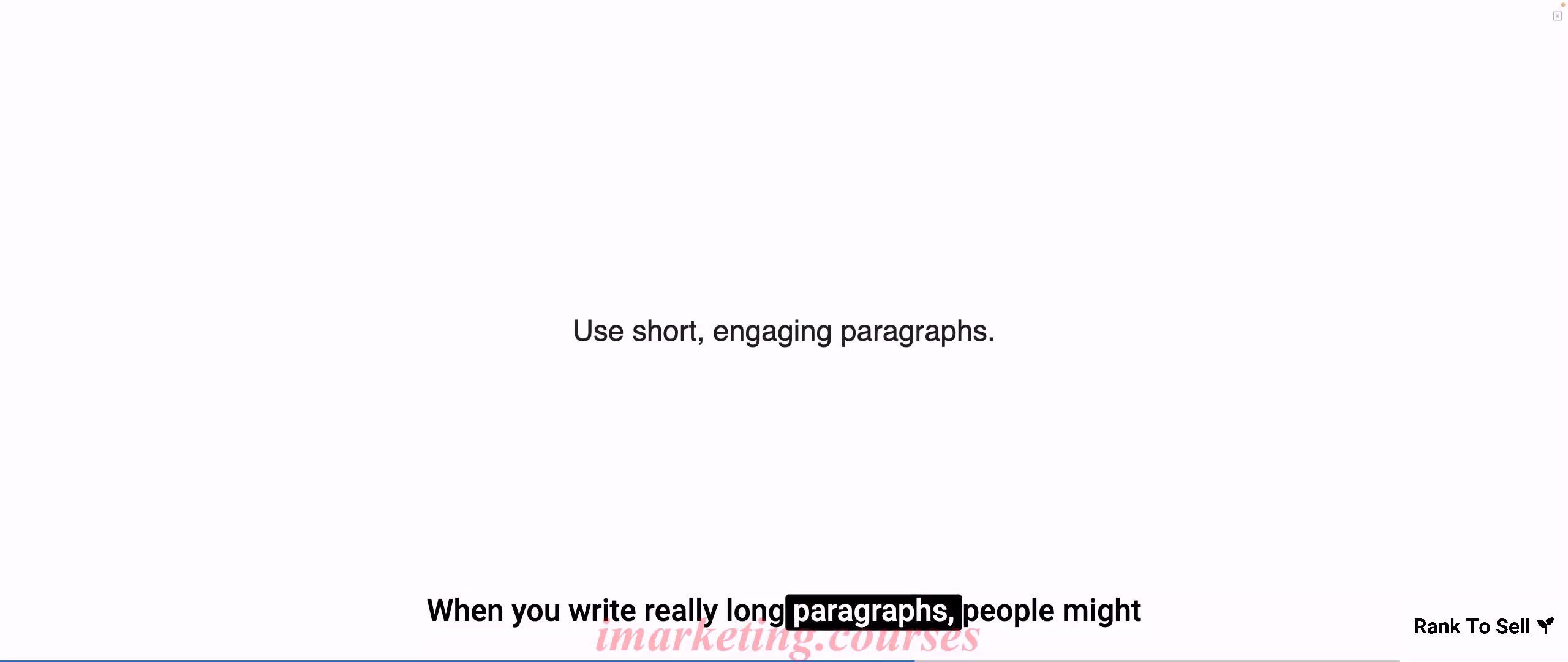
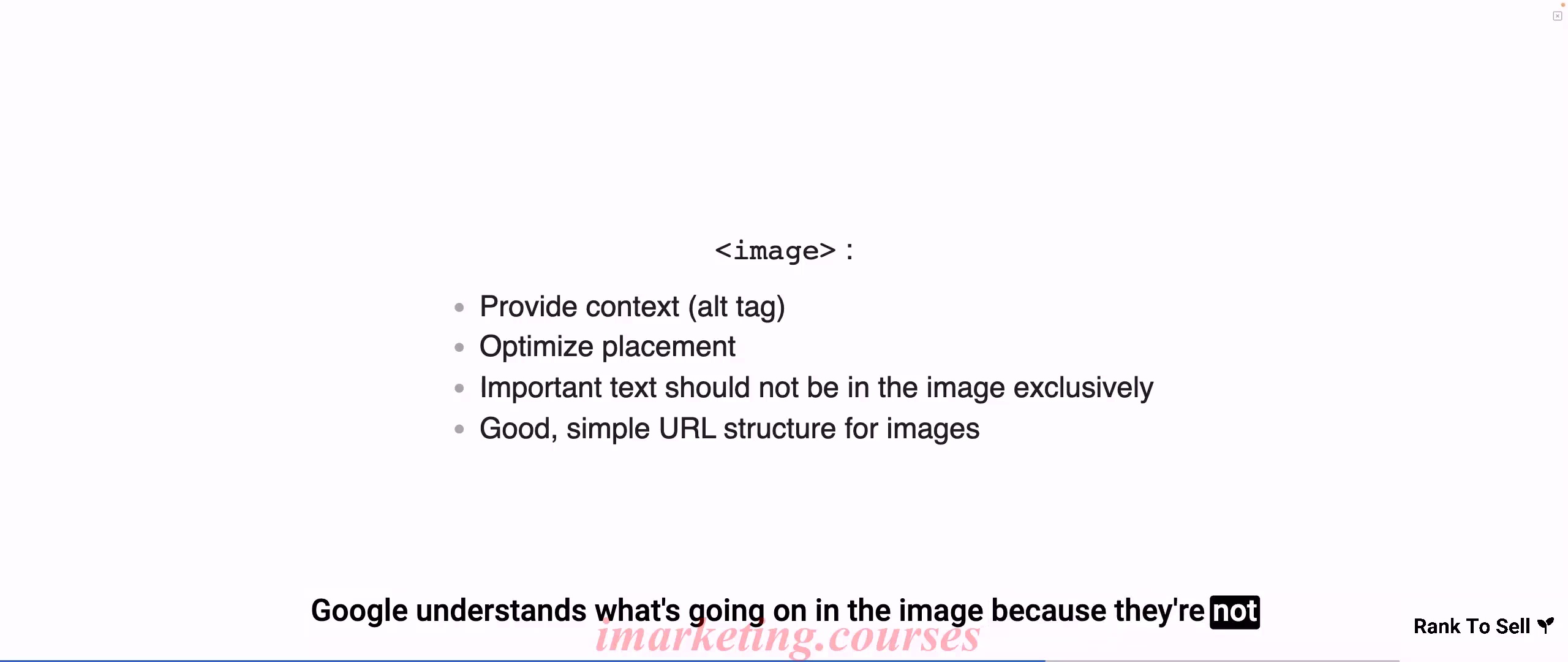
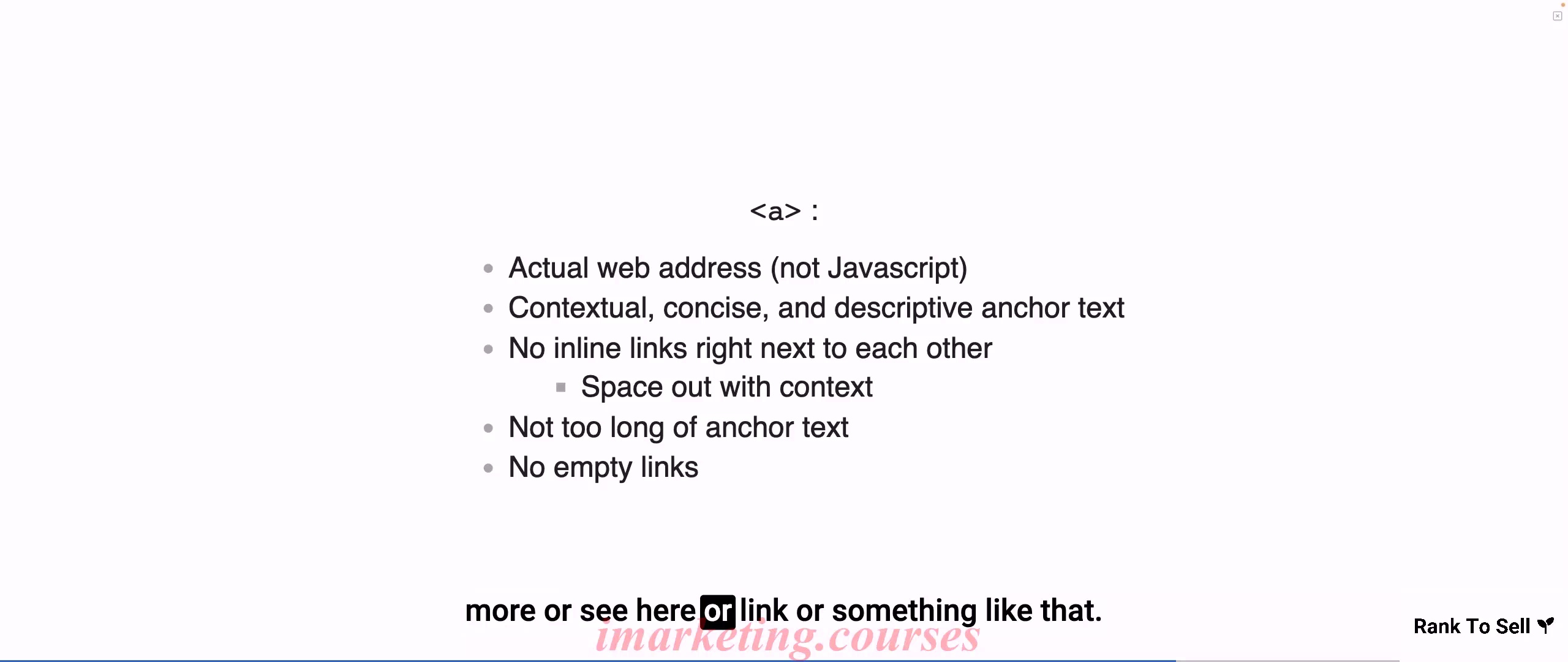
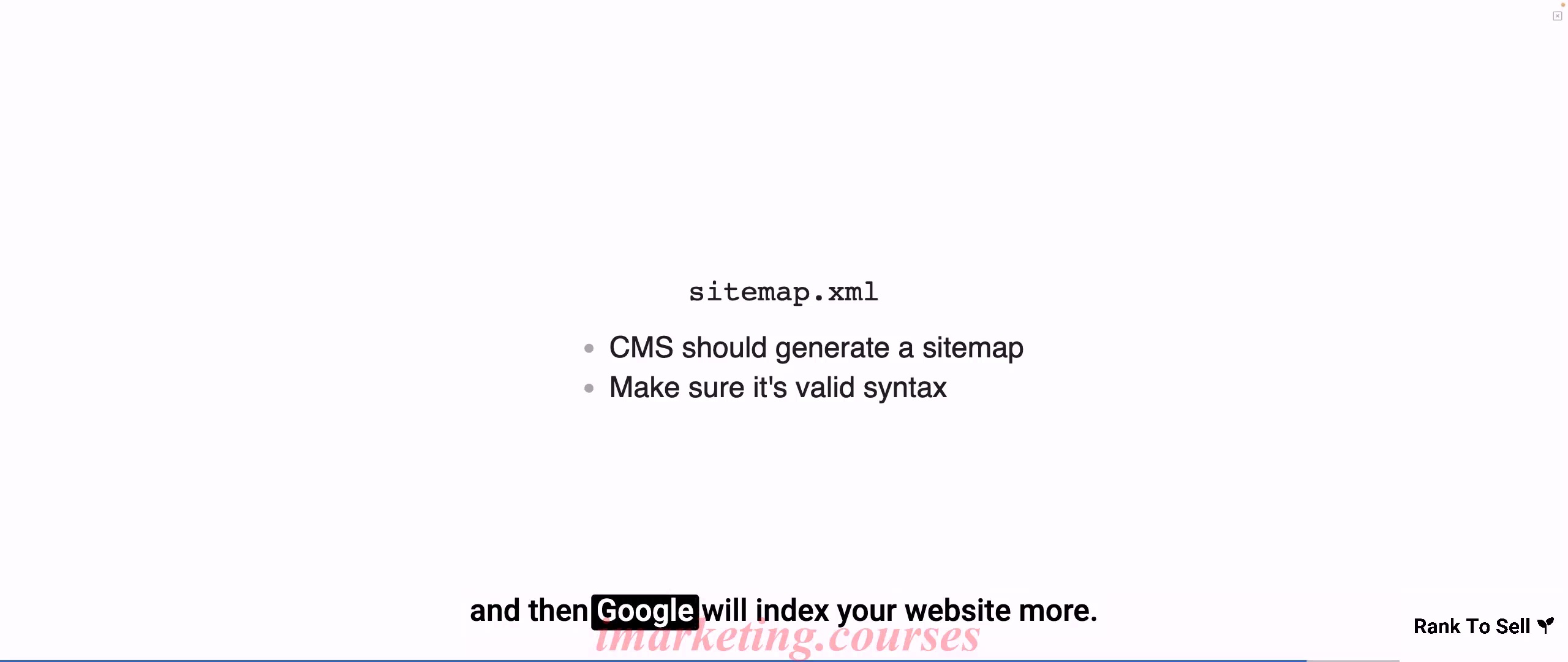
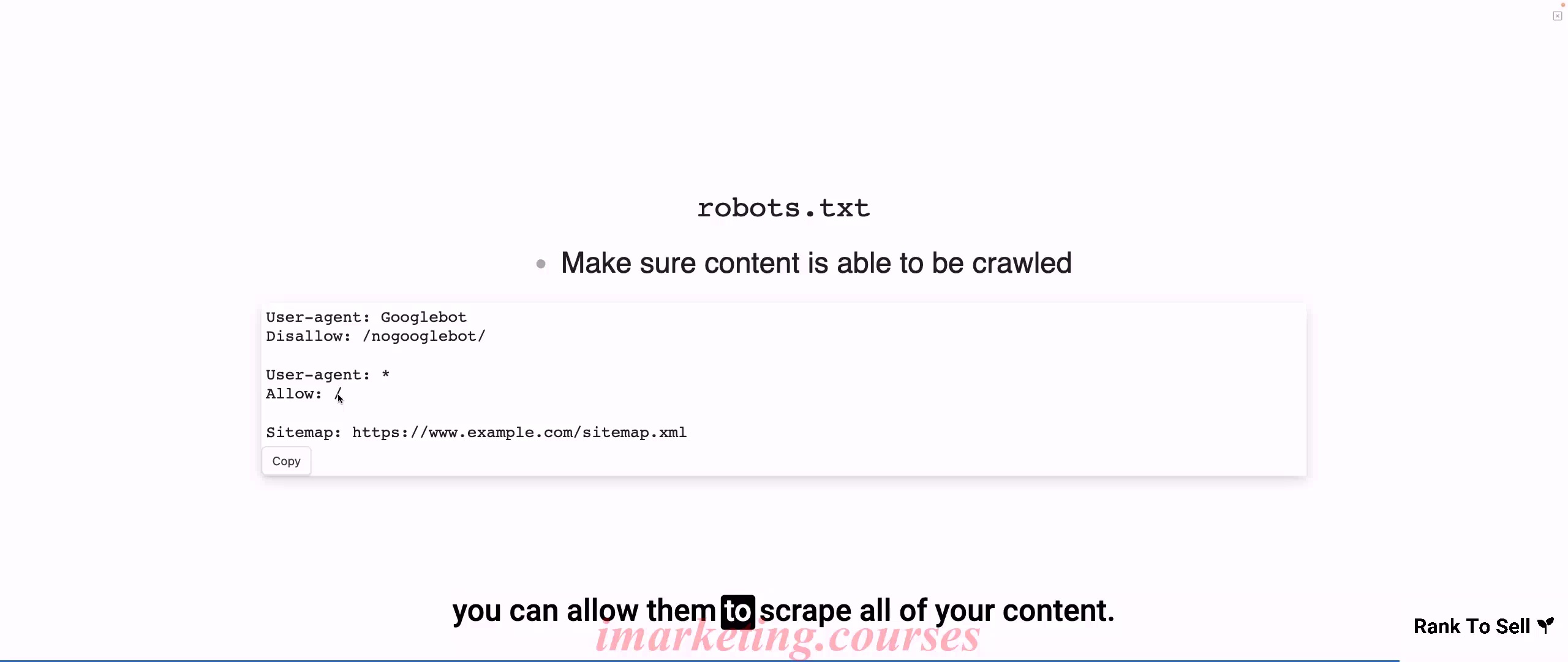
The narrator explains how to structure a website and content for better SEO. The most important pages should be near the root domain. The blog should communicate with customers, not contain SEO content. SEO content should go in root pages like yourwebsite.com/keyword or content hubs with subpages. This keeps URLs clean. Also, blog post URLs should not contain dates and titles; use keywords instead.
Marketing pages with features, services, pricing etc. should target brand and commerce keywords. Don't limit marketing page content. Page URLs should have keywords and descriptive words, not long titles.
Article titles and descriptions should be concise, without keyword stuffing. Articles should have bylines and dates. Long articles need a table of contents, preferably floating. Use rich data like tables and lists, not just text walls. Use short, engaging paragraphs, not walls of text.
Images need descriptive alt text. Don't put key text only in images. Optimize image placement and URLs. Links should have web addresses, not JavaScript. Use descriptive anchor text, not generics like "click here." Don't over-optimize with multiple inline links. Check for empty, broken links.
Most CMS platforms generate XML sitemaps automatically. Validate your sitemap syntax. The robots.txt file allows/disallows bots from parts of your site. Include your sitemap file here. Structured data lets Google pull rich information into search results.
.Rank 2 Sell - pt3-3 to pt4-2 - Part 2













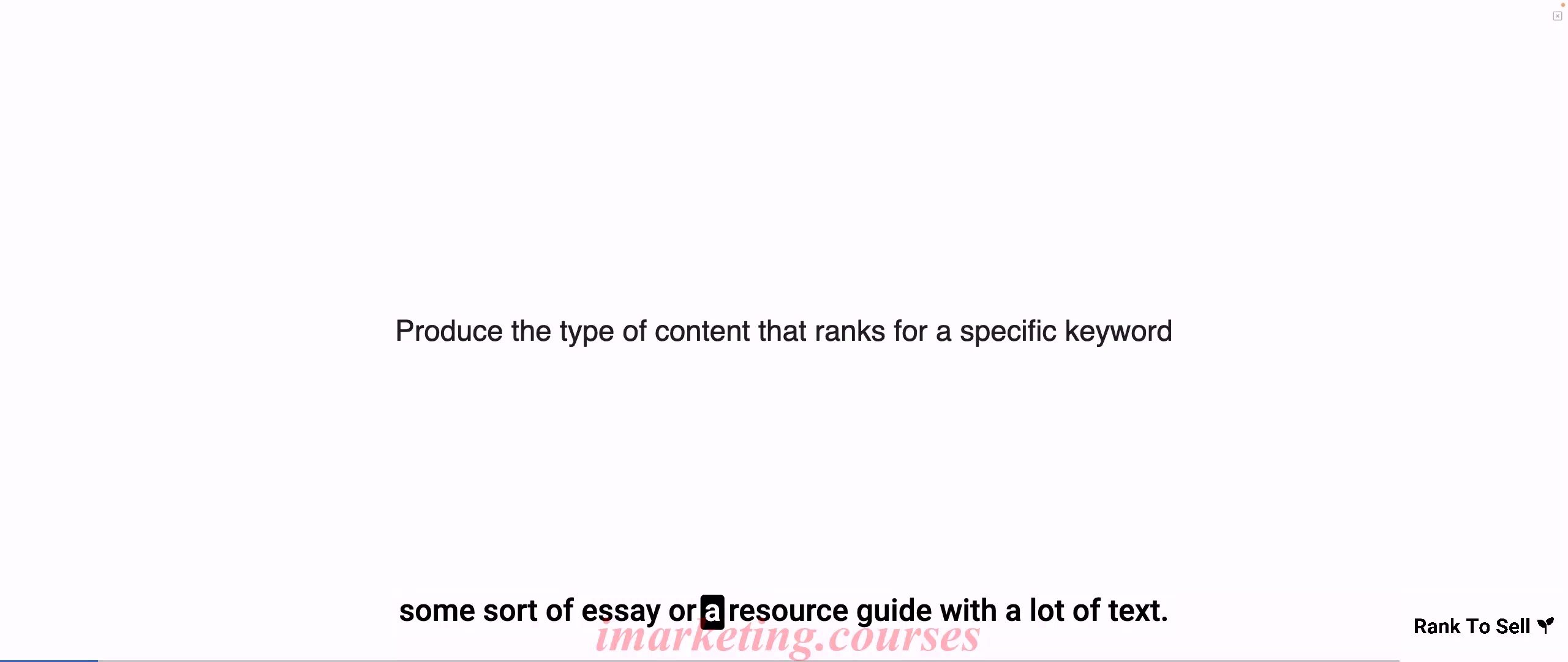
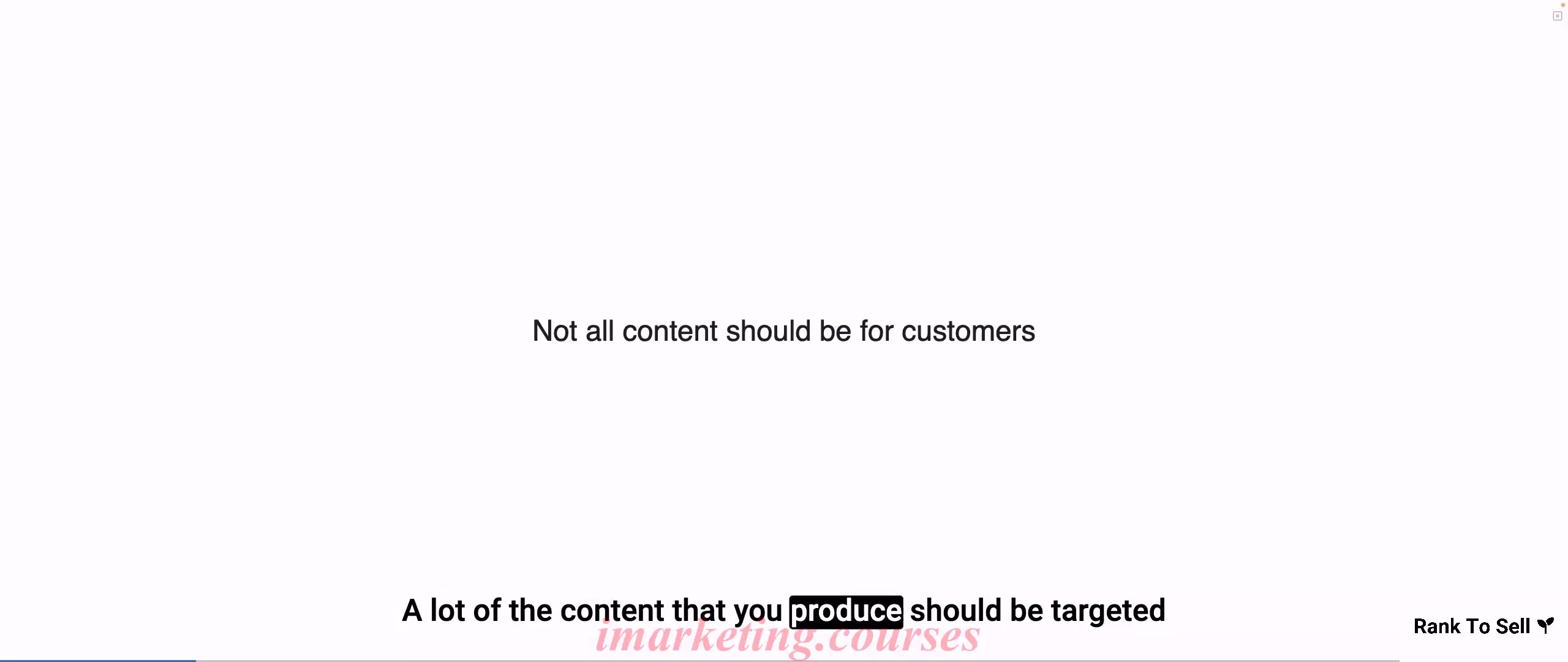
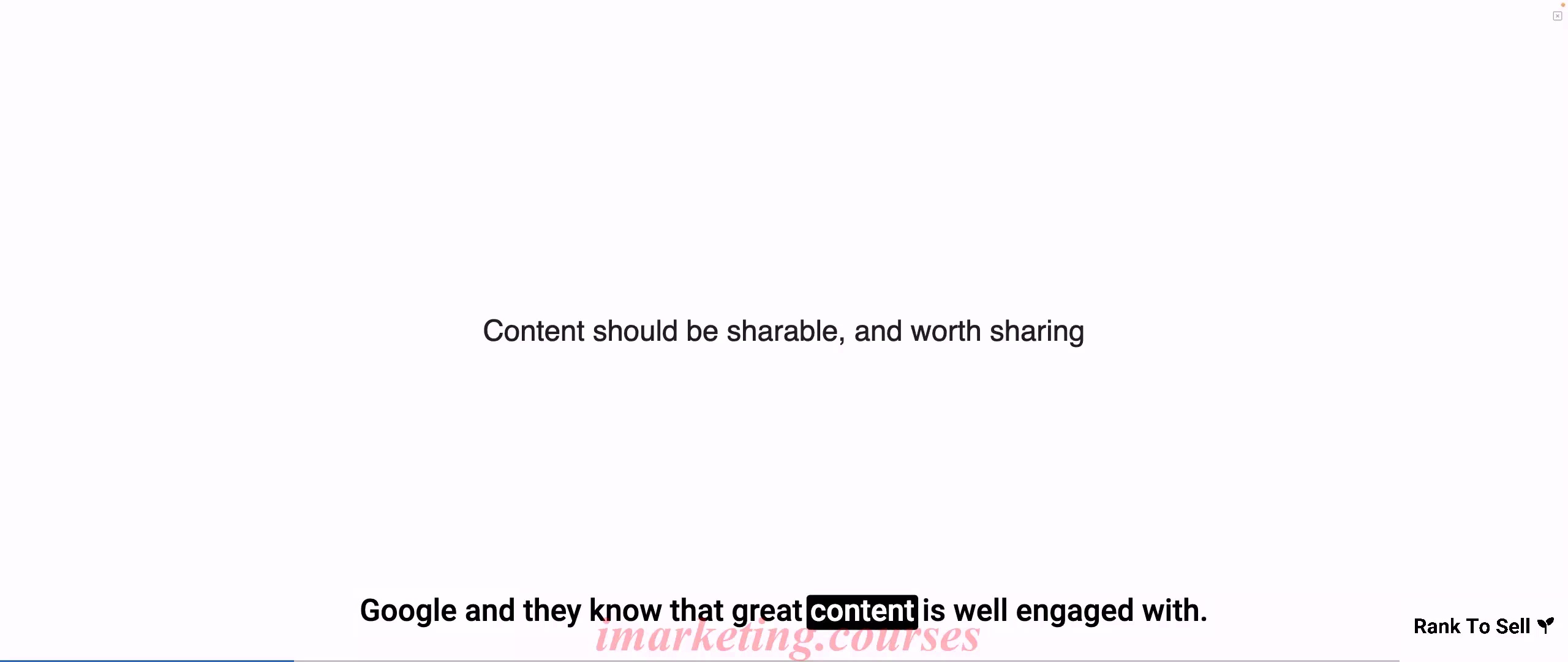
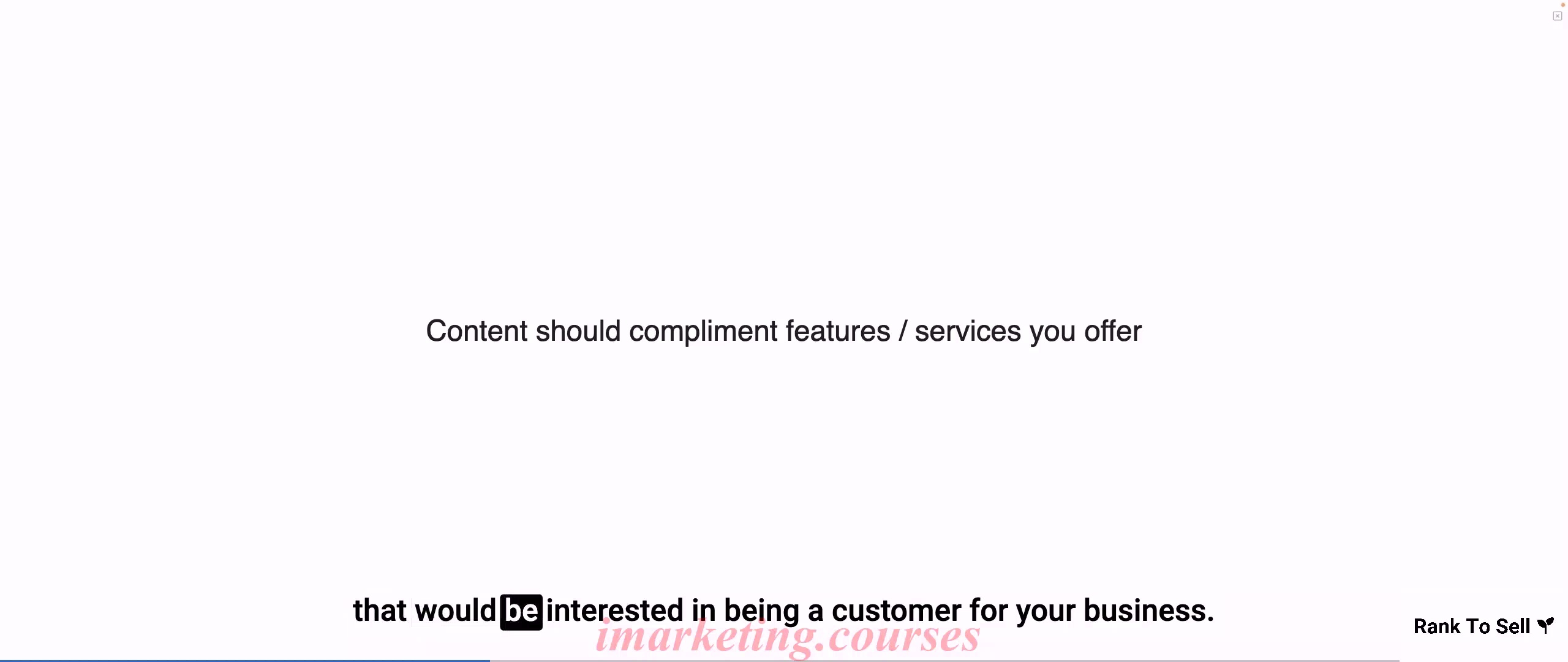
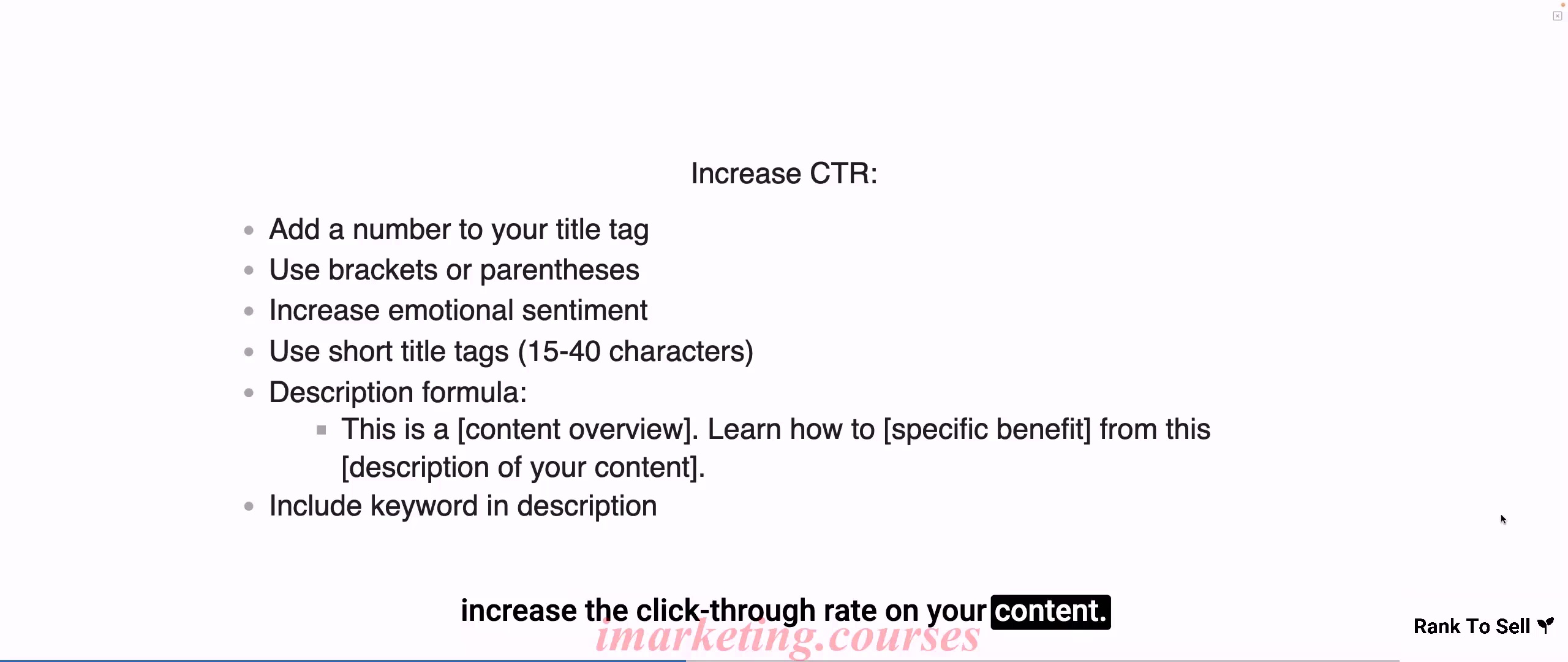
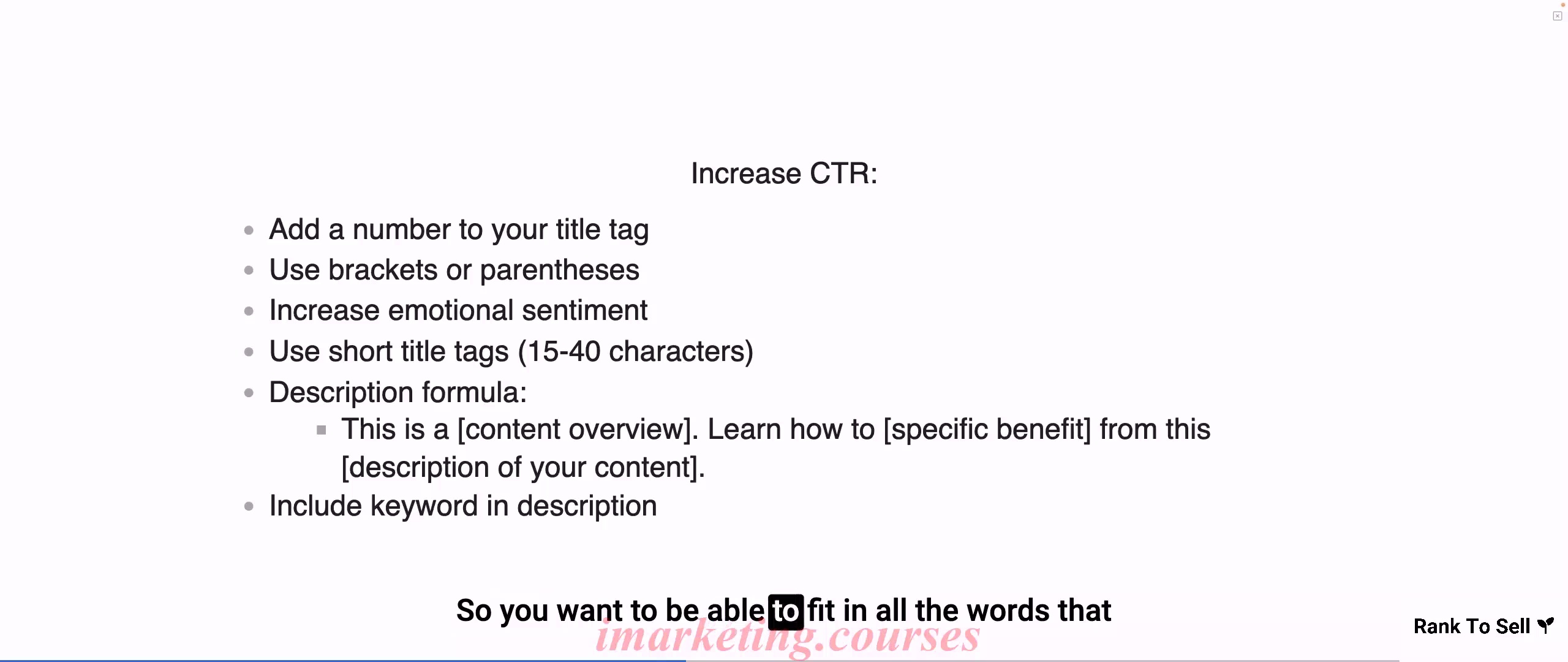
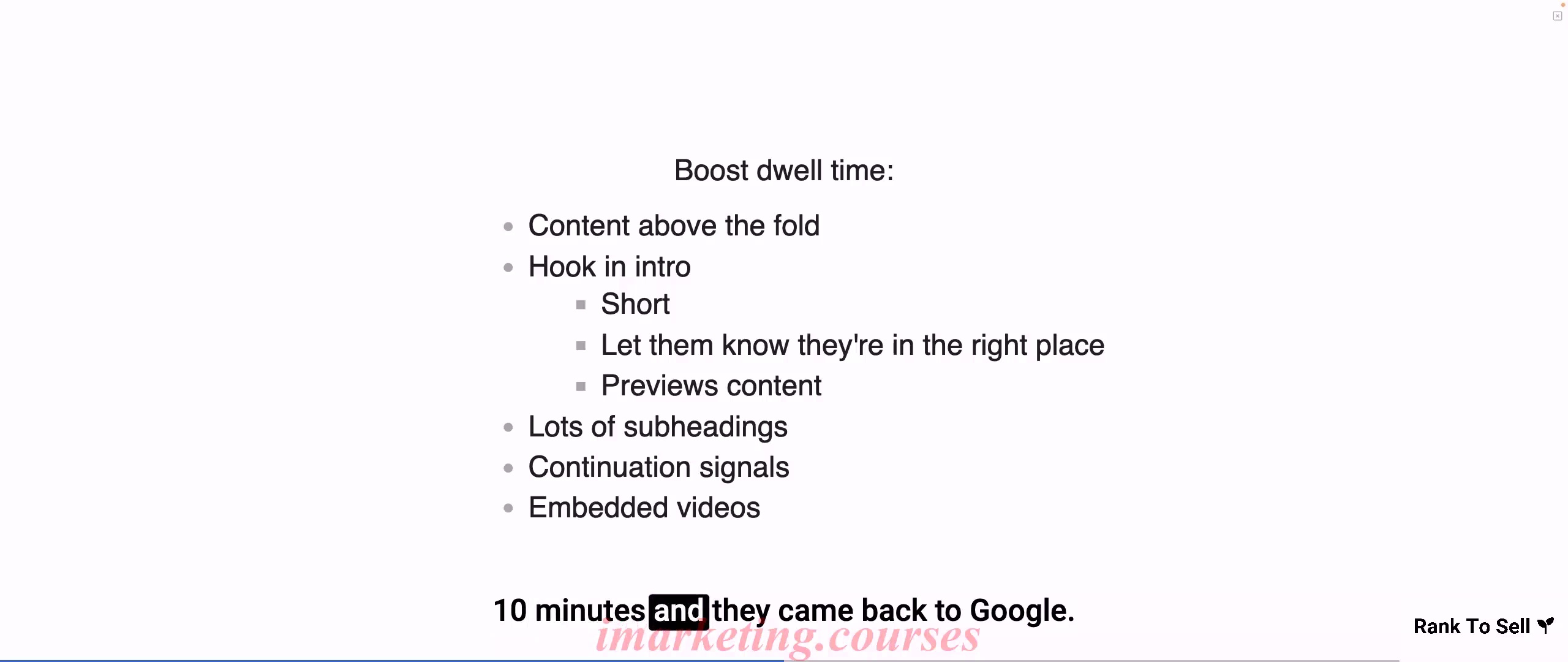
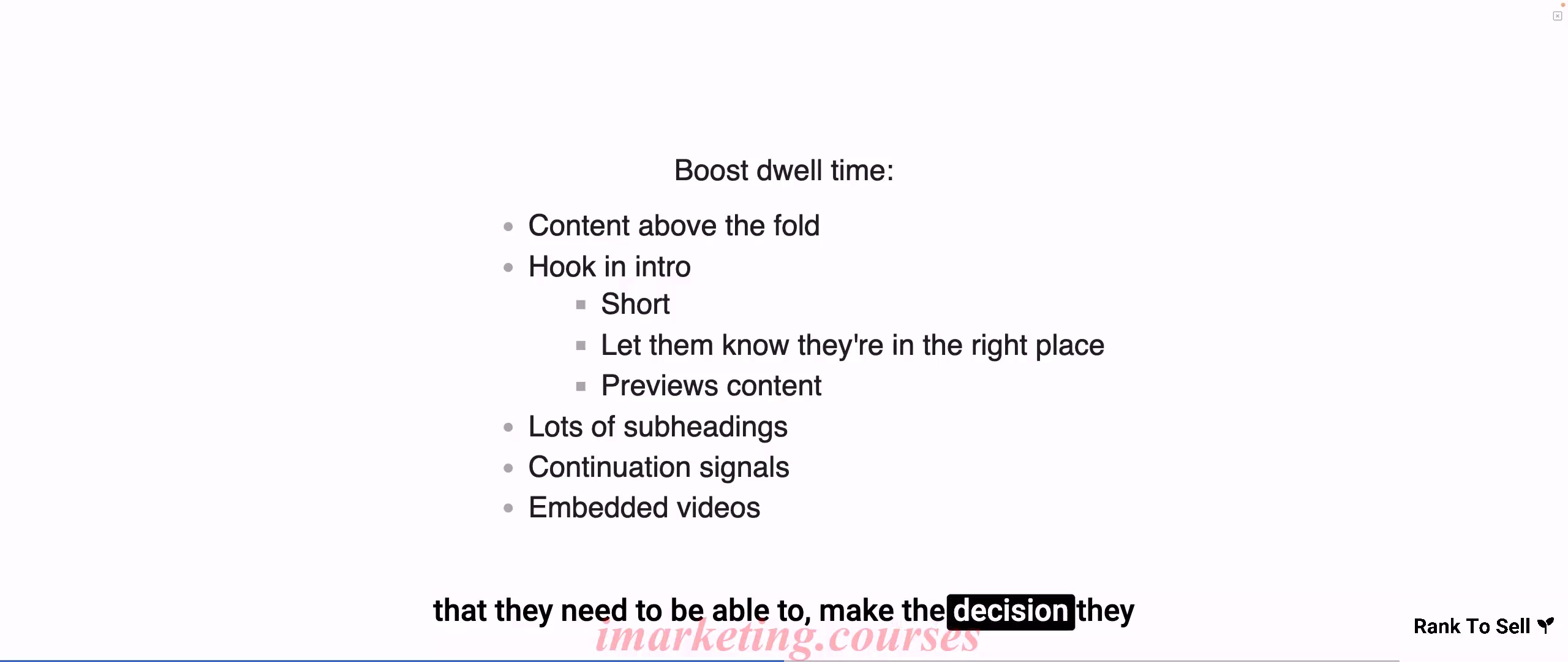
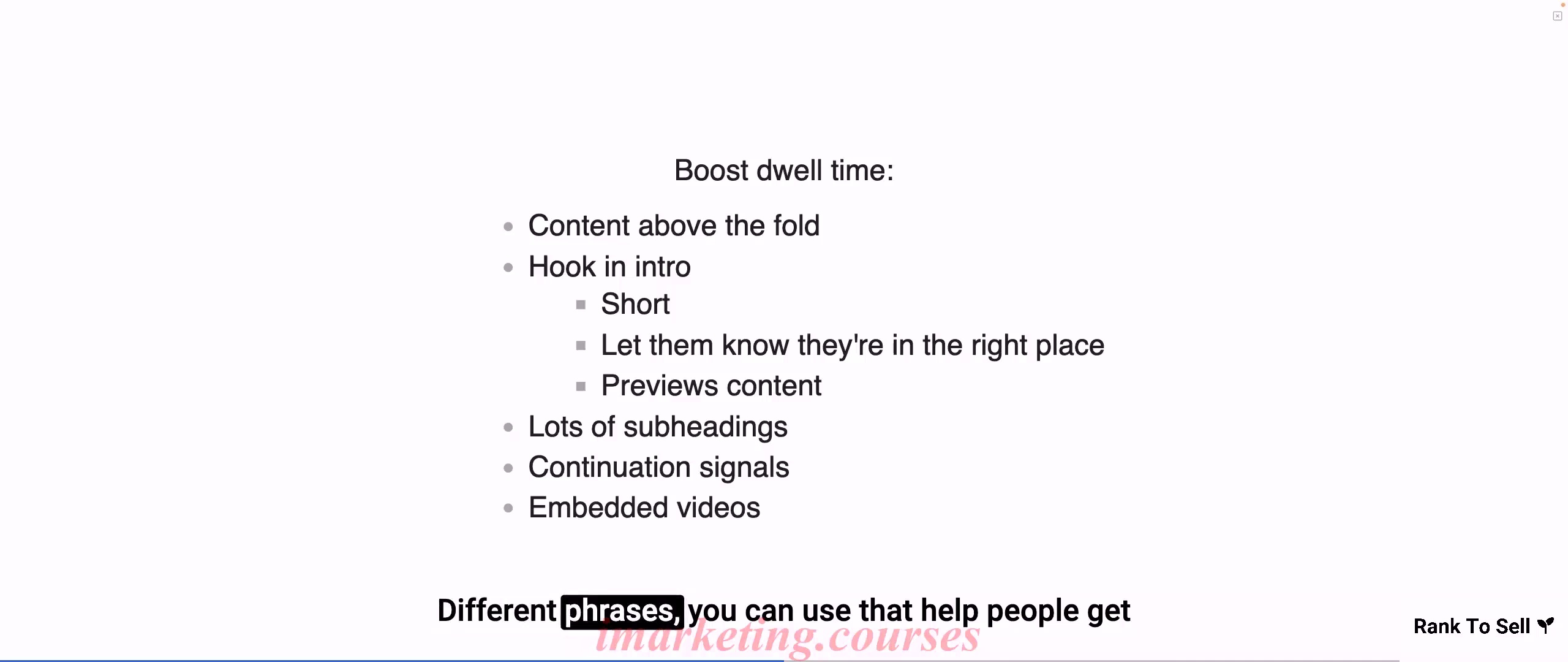
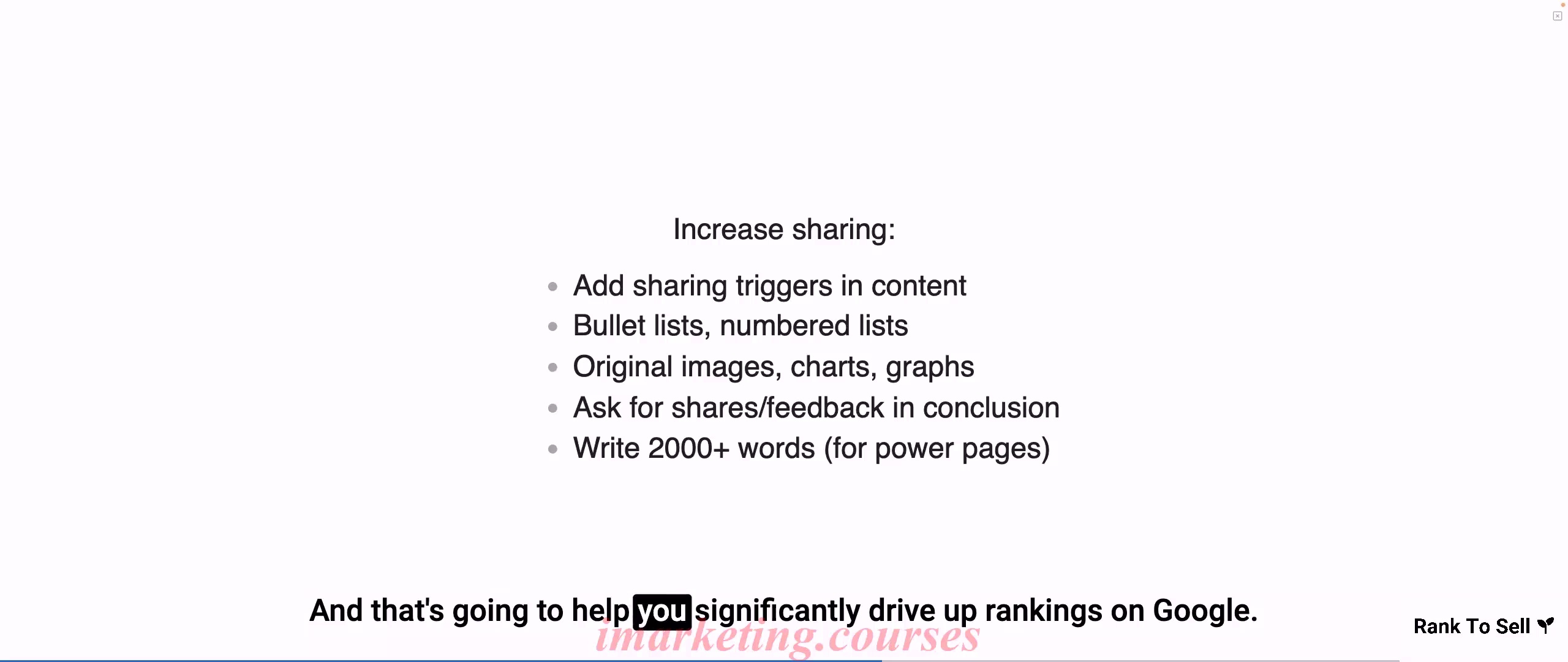
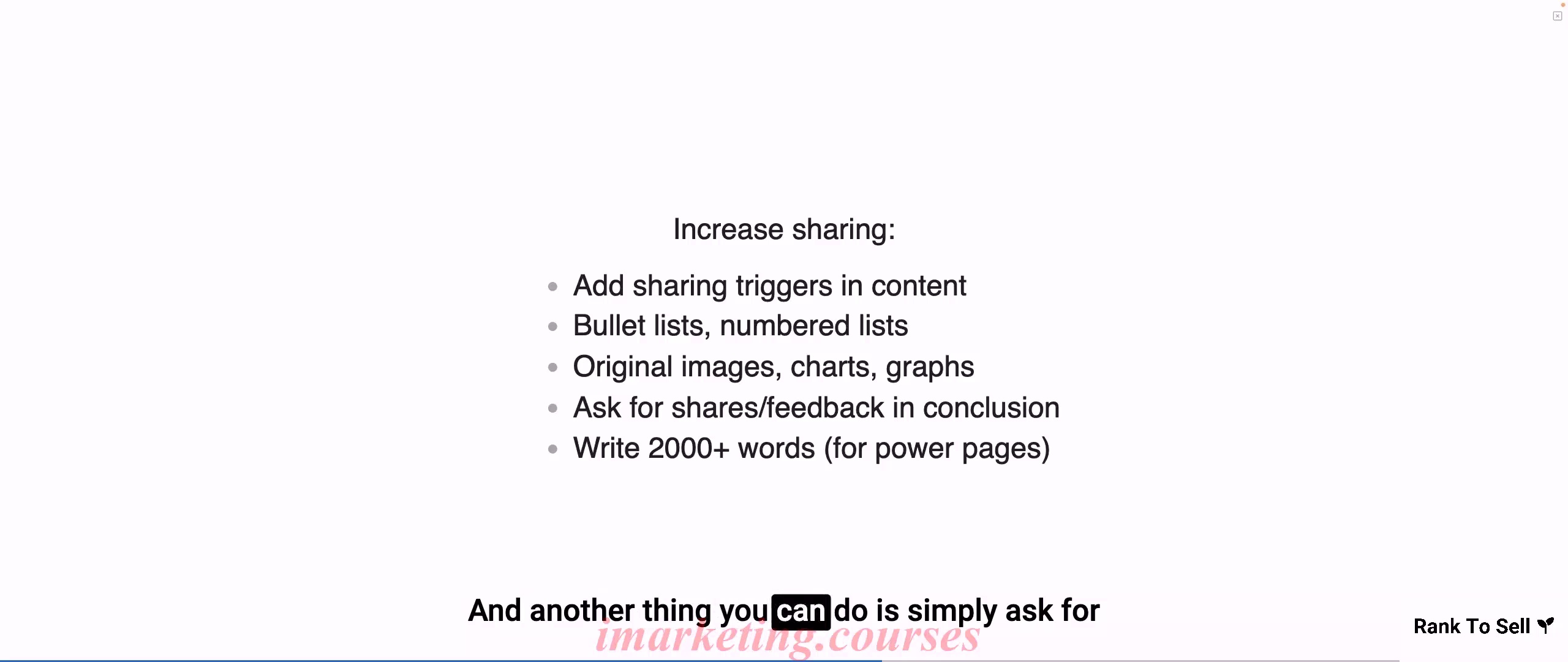
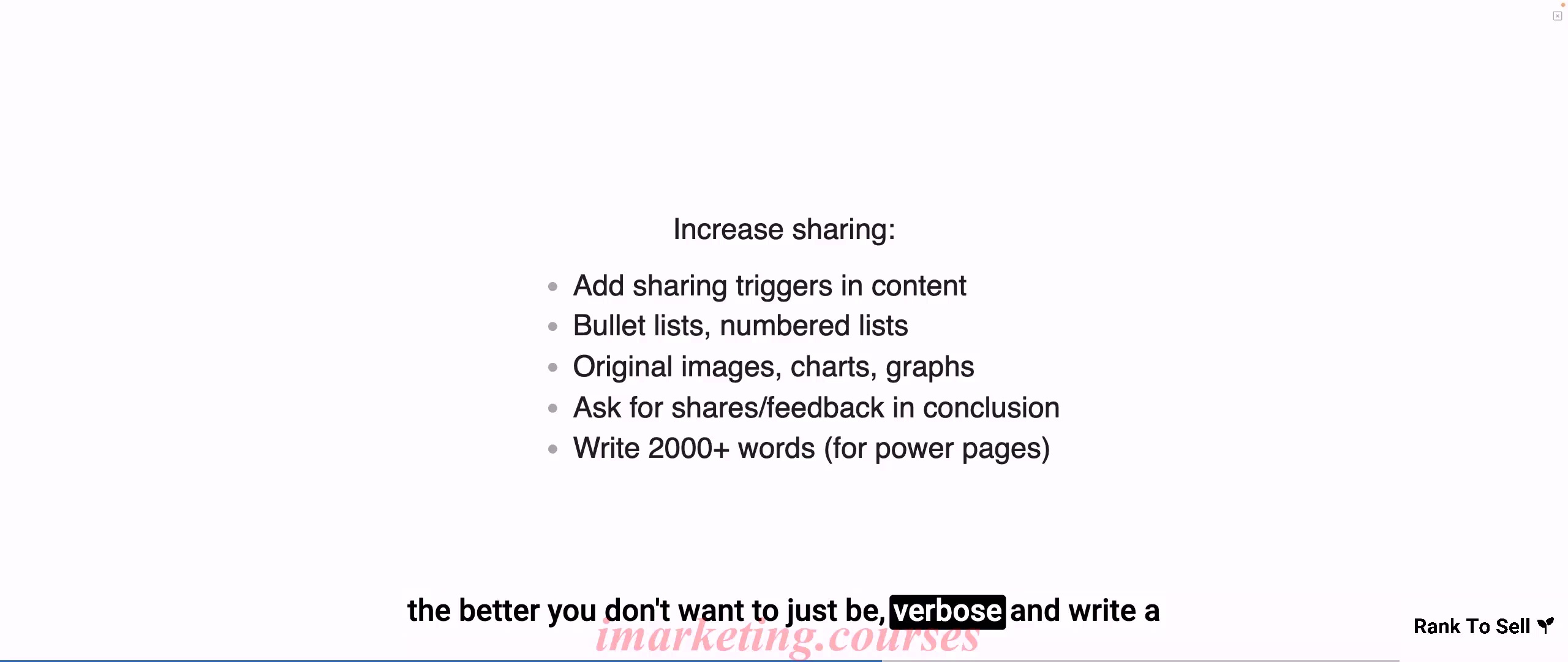
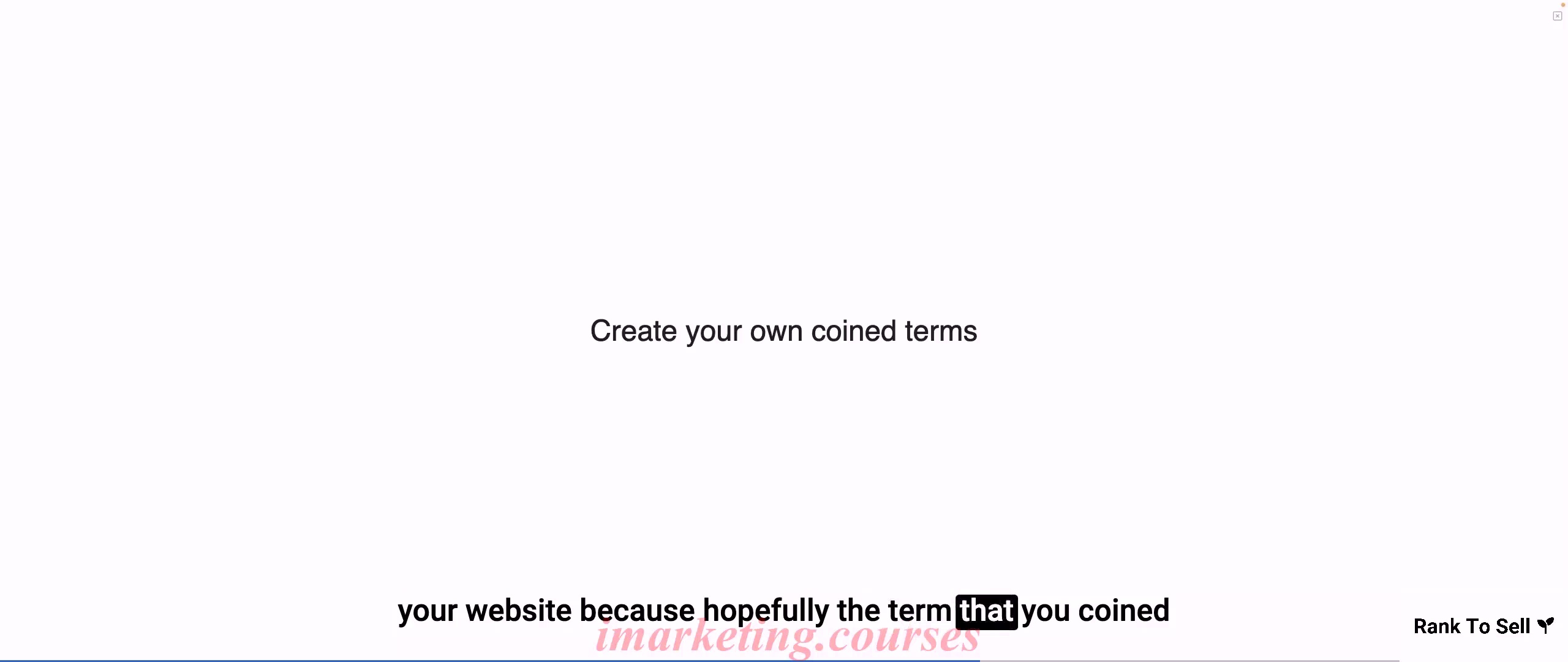
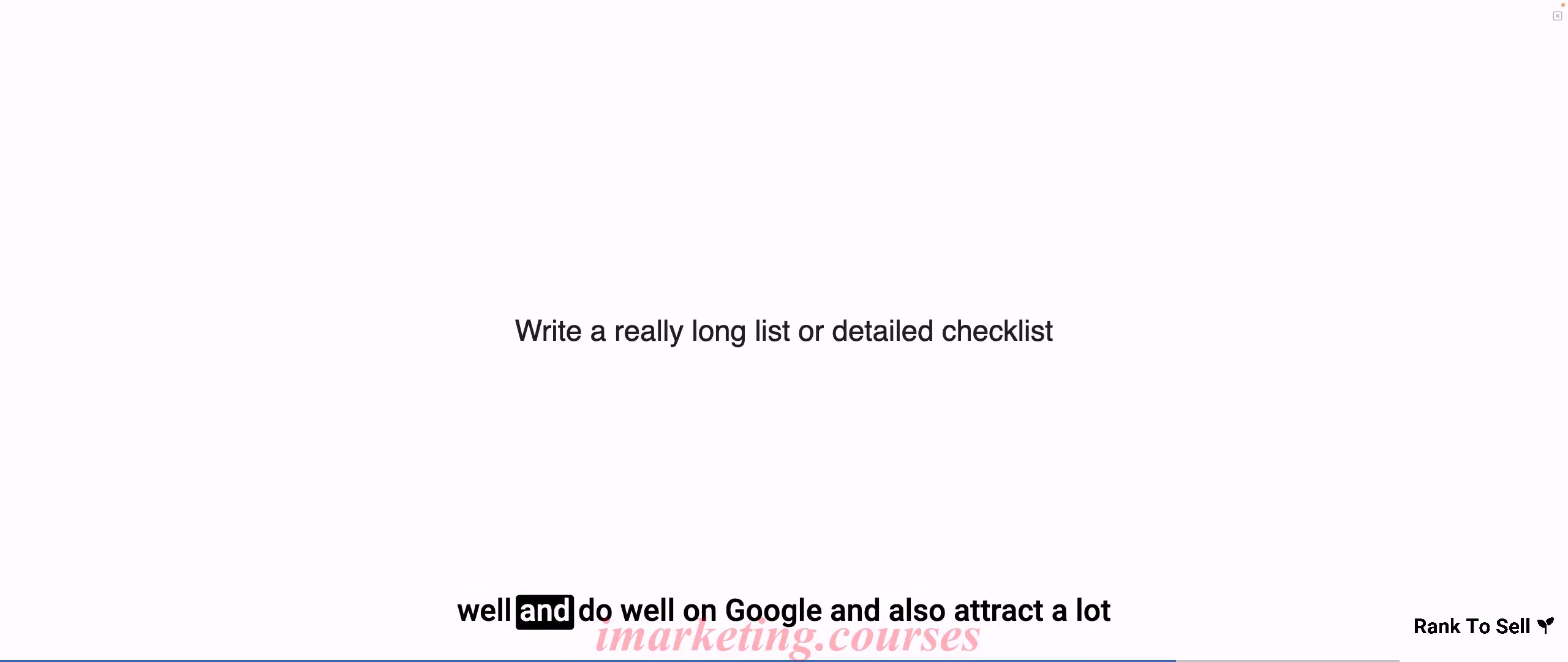
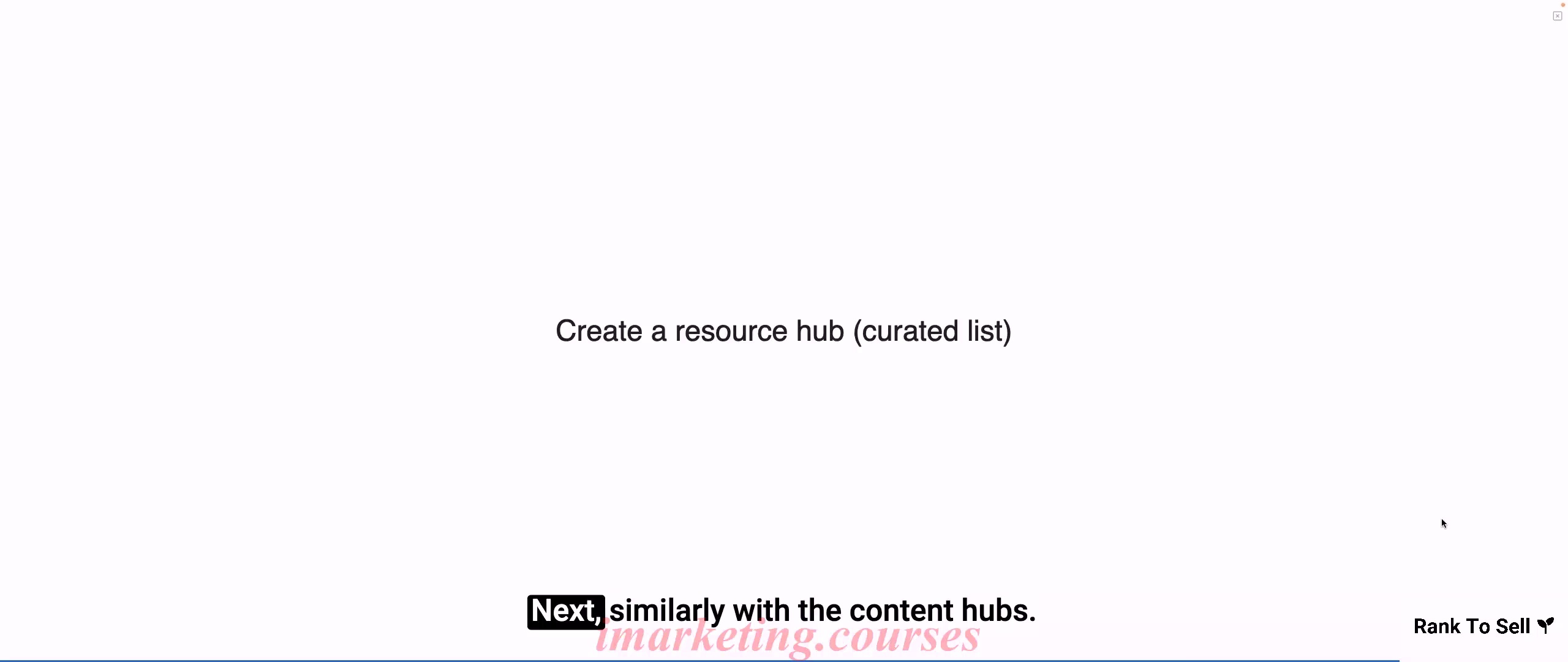
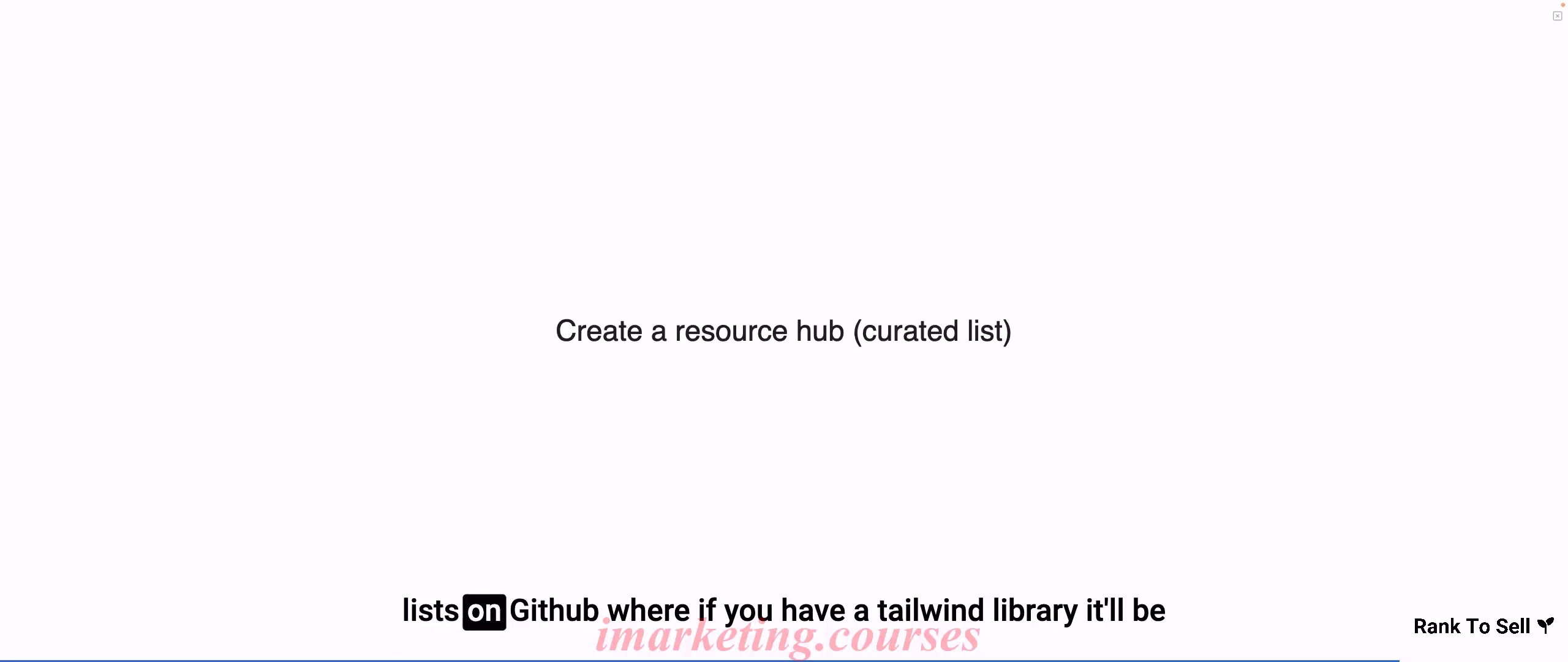
The narrator discusses how to create content that ranks highly in Google search and attracts customers. Key factors include:
- Match content type to what already ranks for the keyword (e.g. lists, videos)
- Create shareable content that attracts backlinks, not just customers
- Complement your product/service features in the content
- Optimize for engagement signals like click-through rate and dwell time
- Coin your own terms to rank for branded searches
- Create guidebooks, checklists over 15-30 items, resource hubs, and knowledge hubs
The narrator emphasizes producing content focused on high user engagement, which signals value to Google's ranking algorithm.
.Rank 2 Sell - pt3-3 to pt4-2 - Part 3






























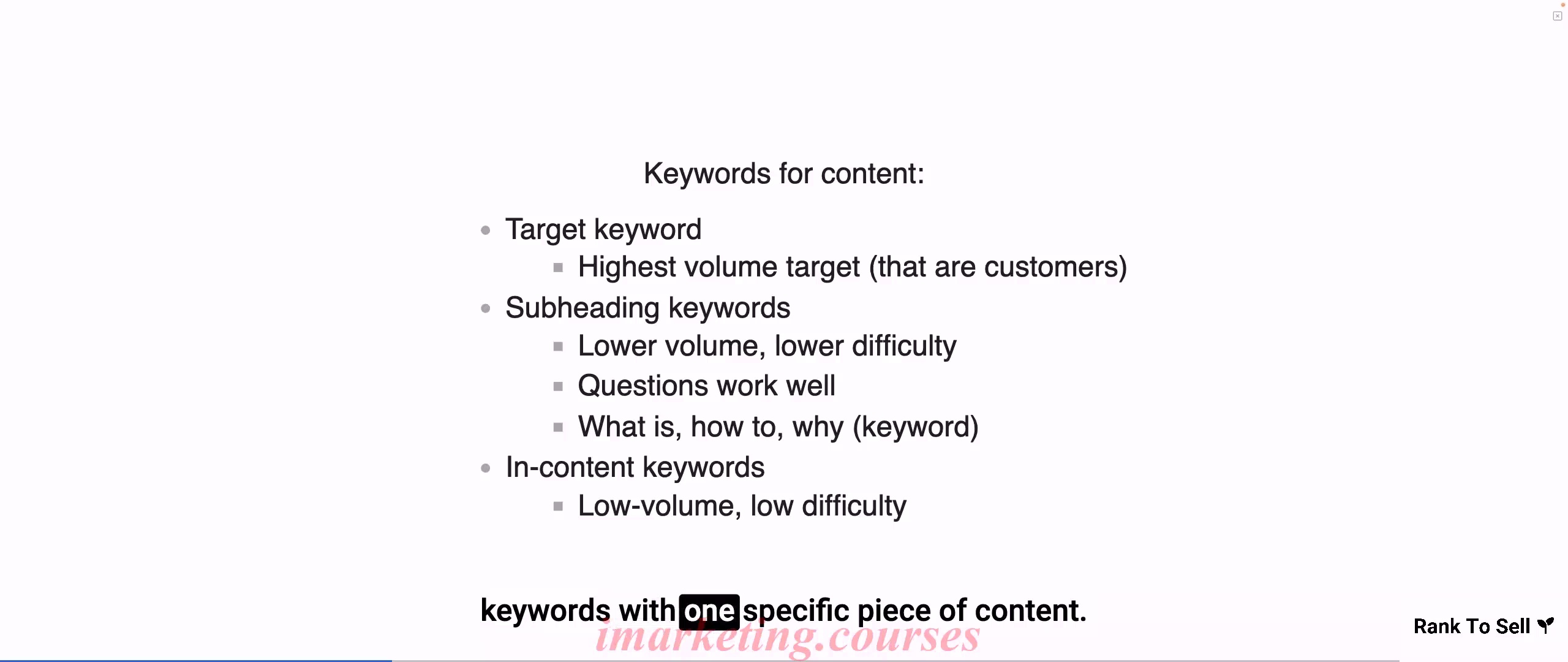
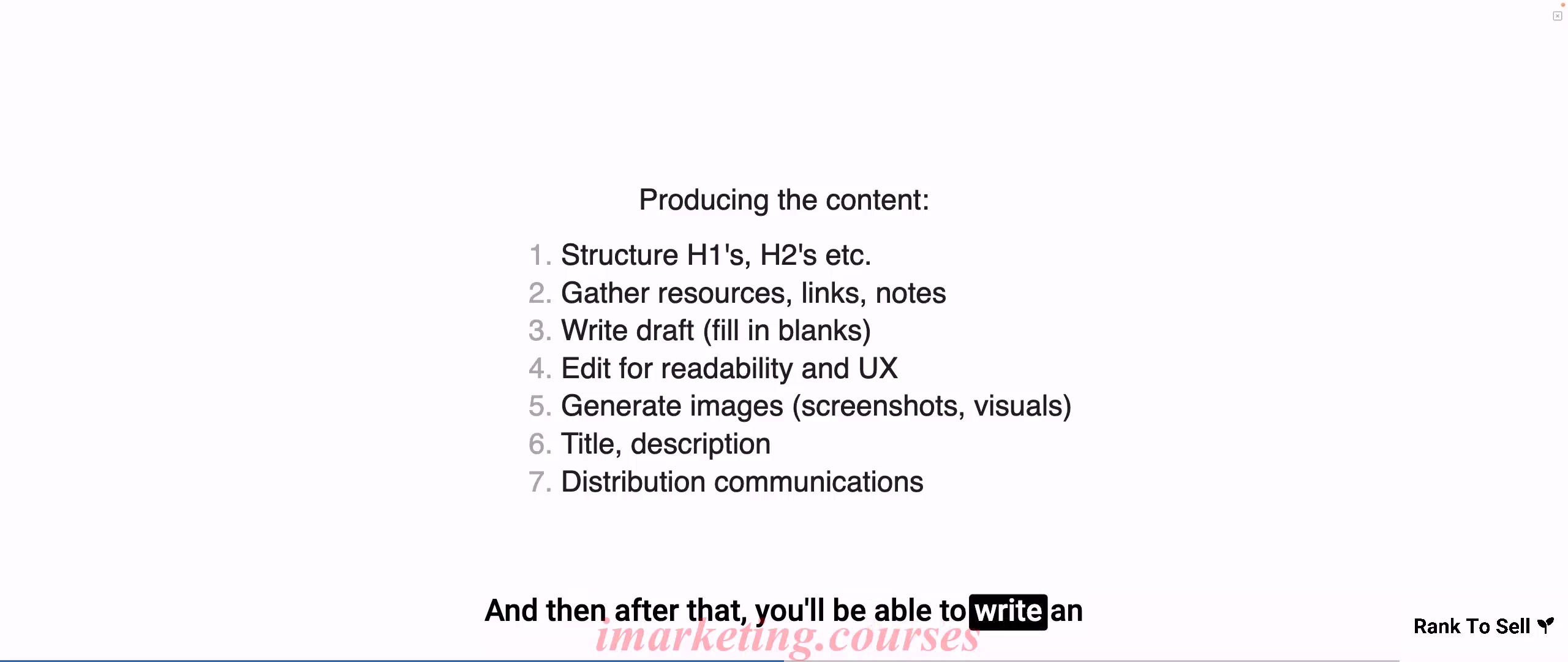
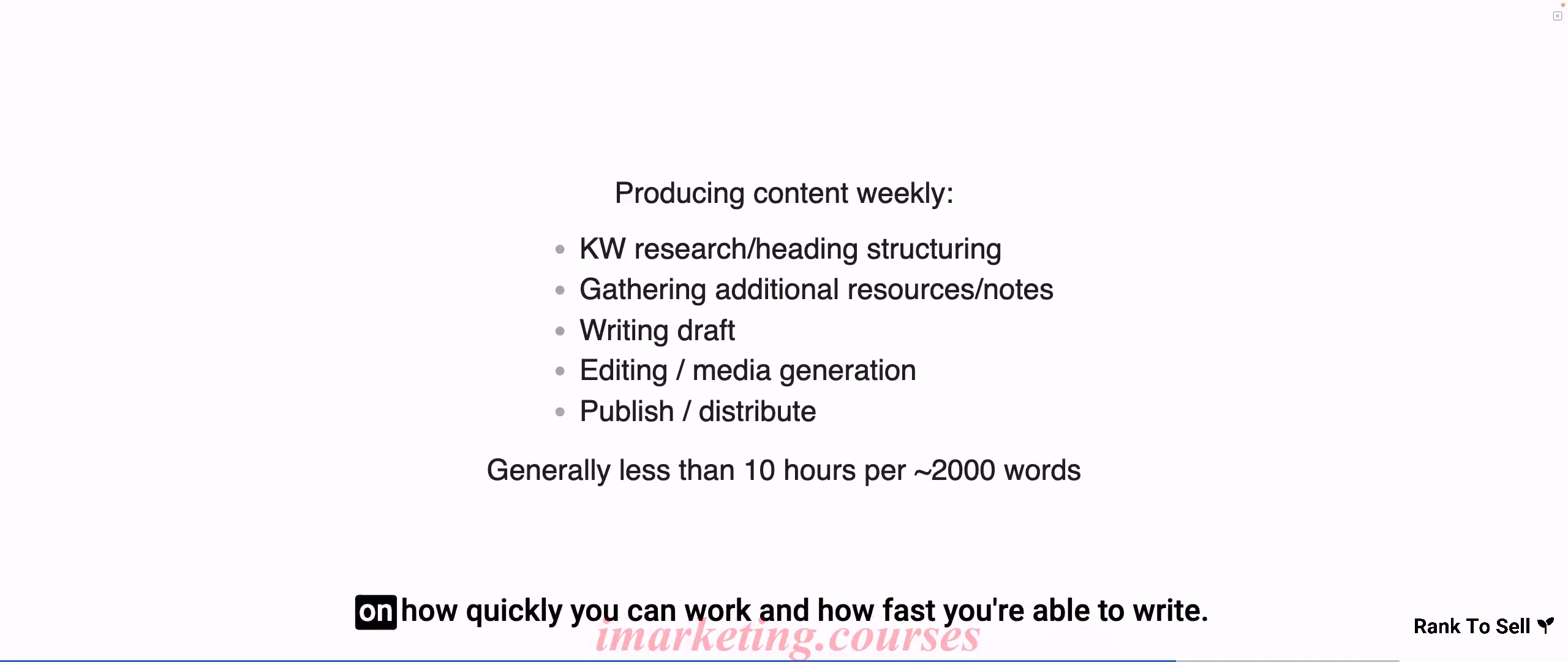
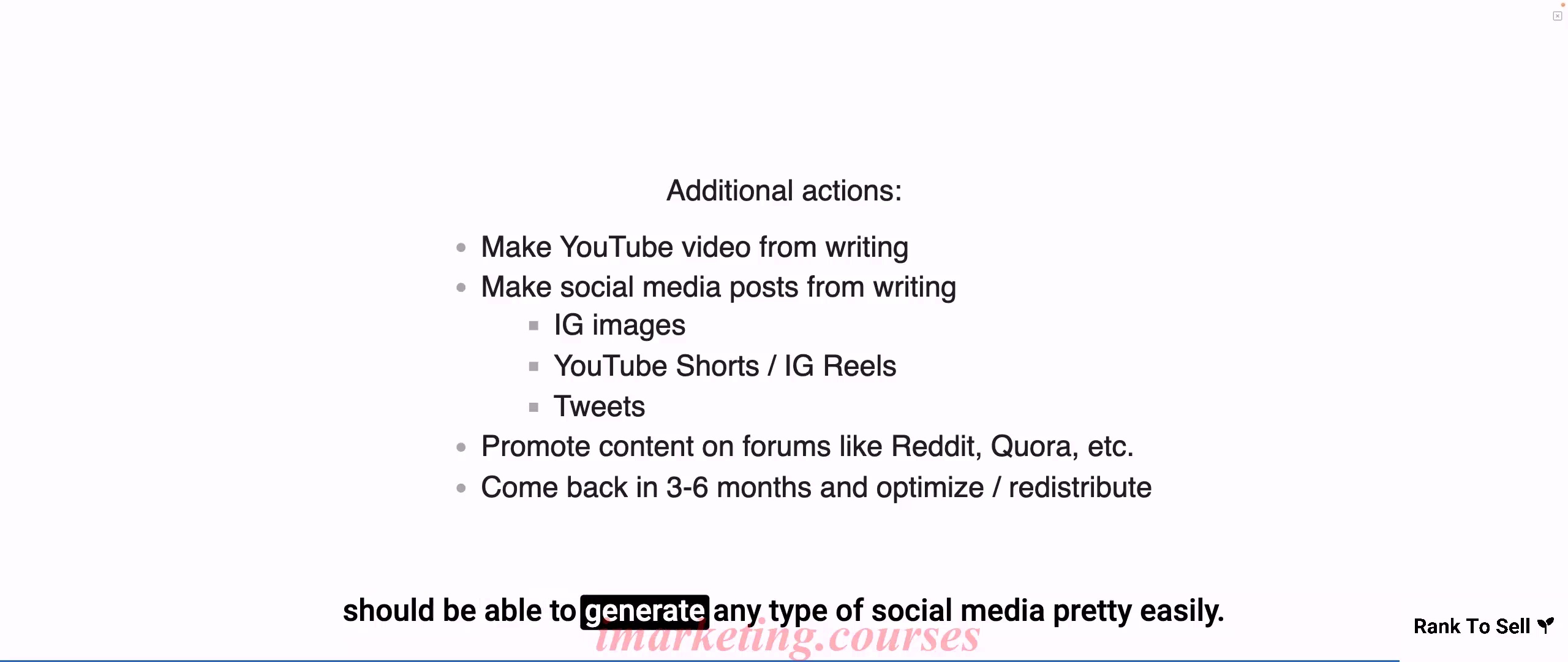
The narrator outlines a workflow for creating effective website content on a weekly basis. This involves:
- Conducting keyword research to identify a primary target keyword, secondary keywords for subheadings, and tertiary "in-content" keywords.
- Structuring content by outlining h1, h2, and h3 headings first.
- Gathering additional resources and notes to assist with writing.
- Writing a draft to fill in details under the predefined headings.
- Editing for readability, adding images and media.
- Finalizing the title and description.
- Distributing the content via email, social media, etc.
The narrator estimates 10-20 hours for a 2,000 word article and up to 60 hours for a more comprehensive 3,000-5,000 word guide.
Additional promotion ideas include creating companion YouTube videos, social media posts, and optimizing/redistributing older content to further build links and traffic.
.Rank 2 Sell - pt3-3 to pt4-2 - Part 4



































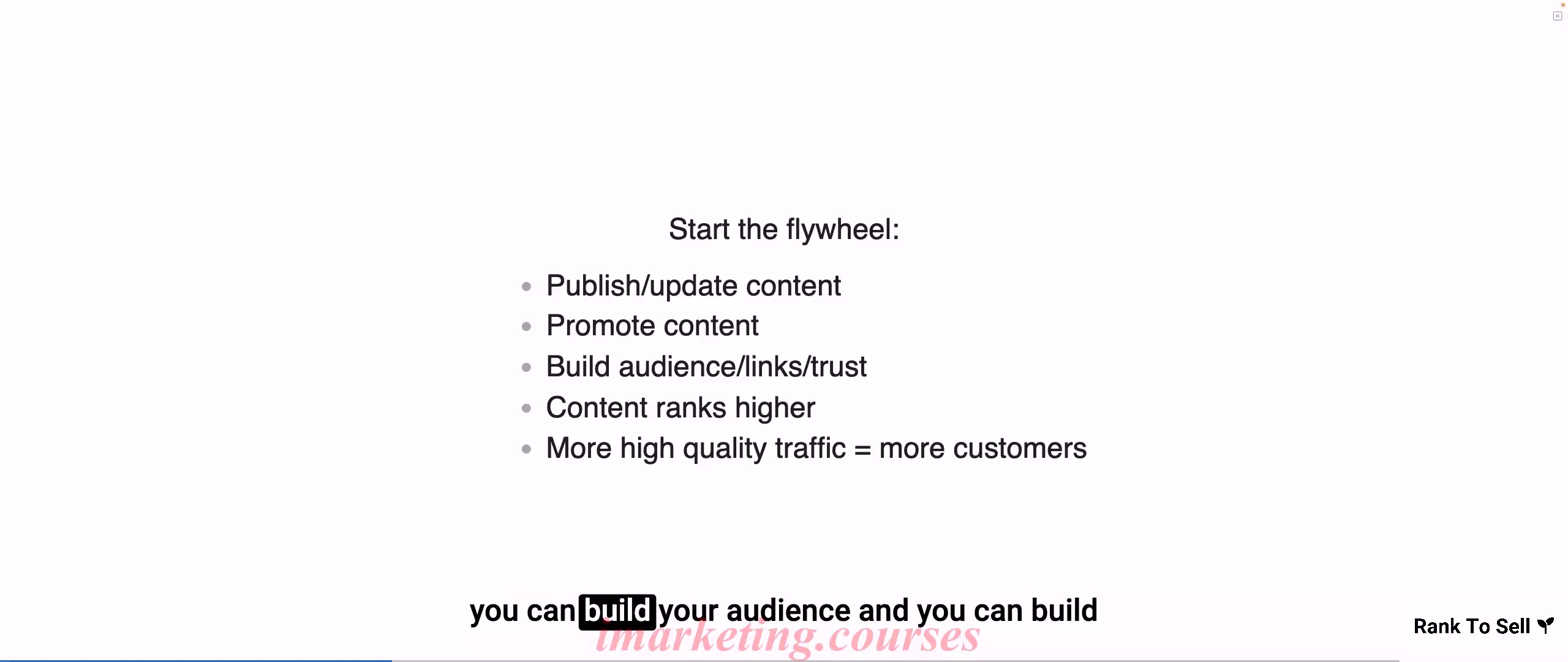
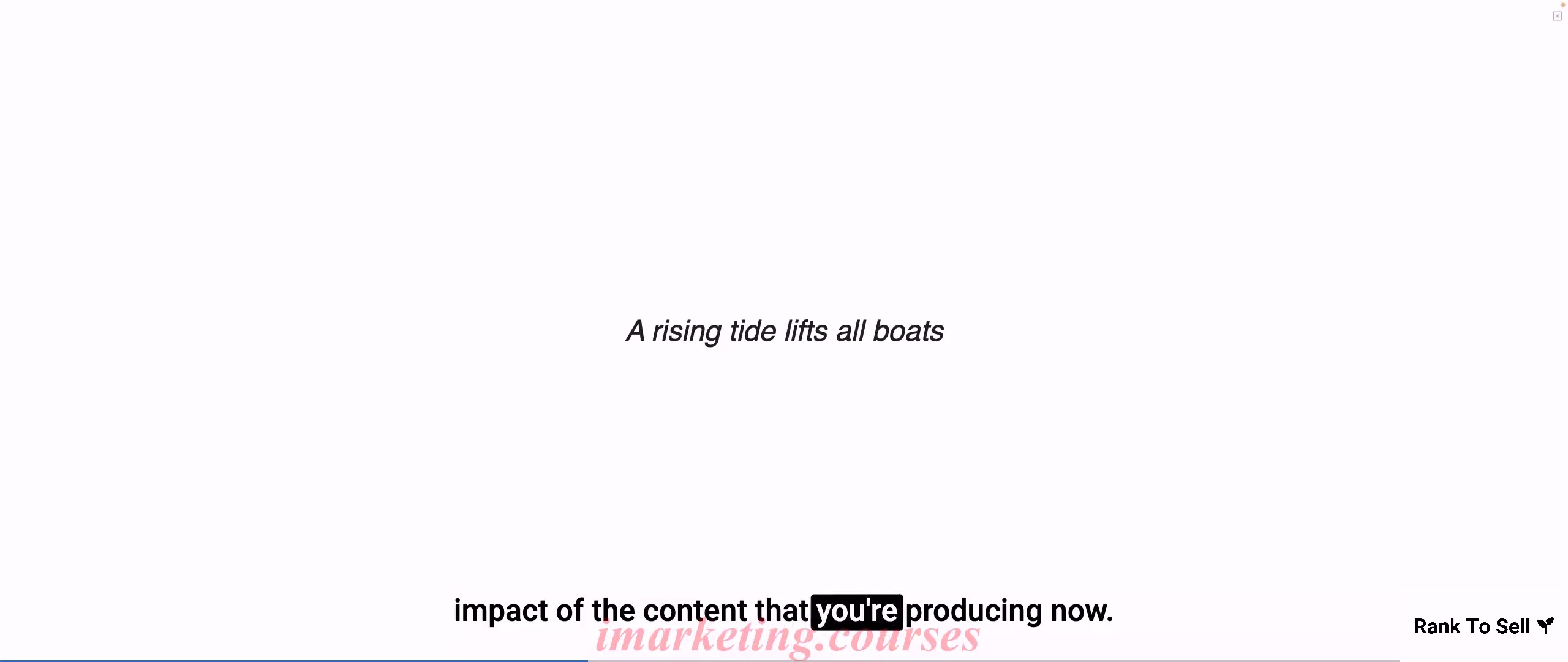
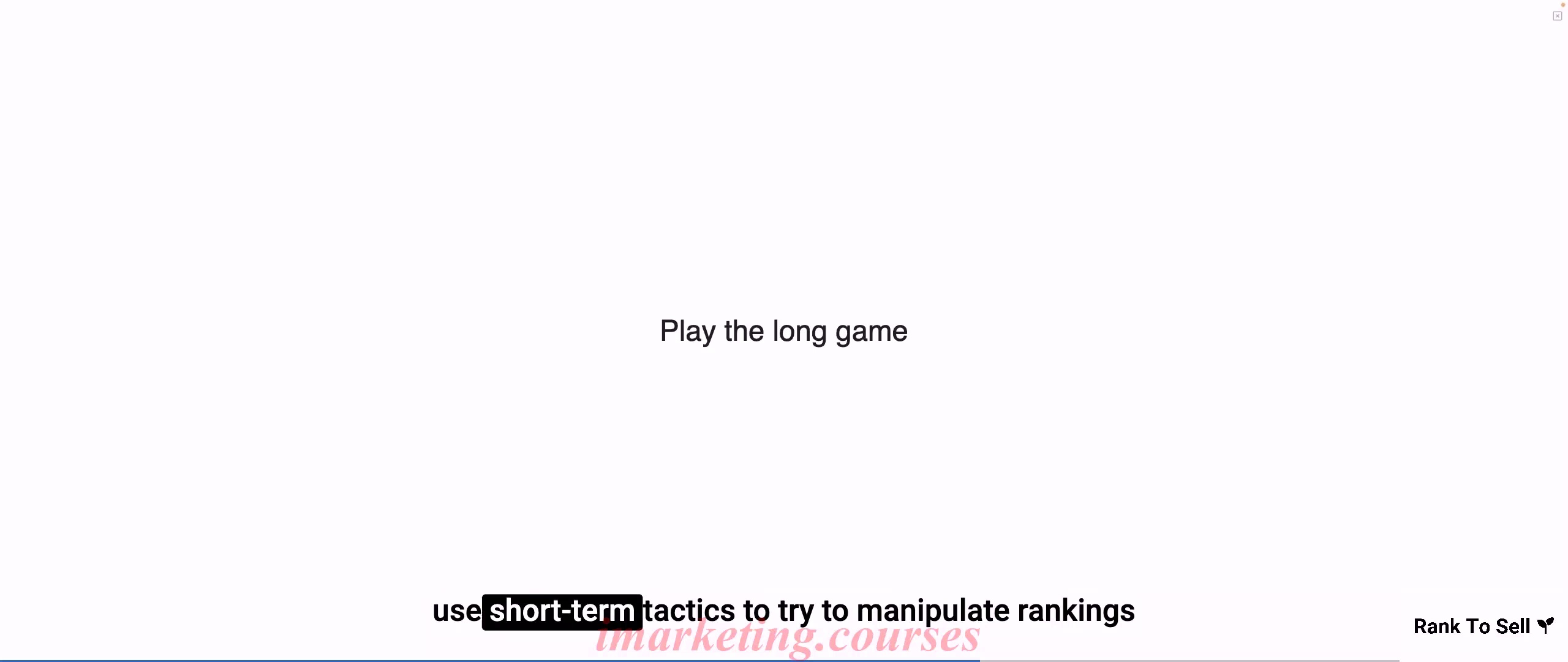
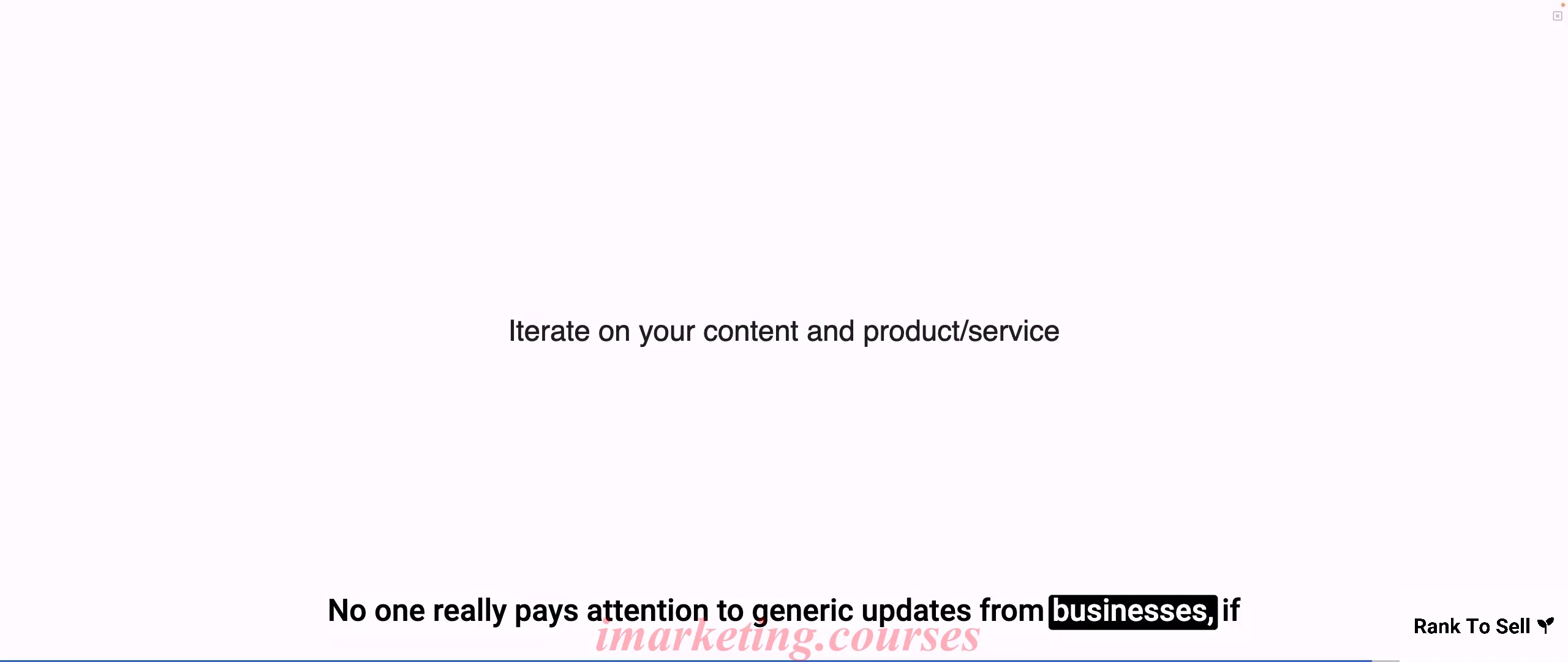
The narrator says SEO takes time, often months or years, to see significant results. However, by targeting long-tail, untapped keywords, you can see immediate results. The key is to continually produce and promote content to build your audience and backlinks. This builds trust and authority, ranking you higher in searches, driving more customers and revenue to reinvest in more content. Everything you produce boosts past content too. Focus on building trust with search engines, visitors, your audience, and customers. Retain your current audience while acquiring new ones. Iterate on your content and products to improve quality and have noteworthy updates to promote. First practice content production, then iterate what works, then promote your content, building an audience and trust that lifts all your previous efforts too. Eventually you can dominate your niche with an authoritative brand people rely on.
.Rank 2 Sell - pt3-3 to pt4-2 - Part 5








































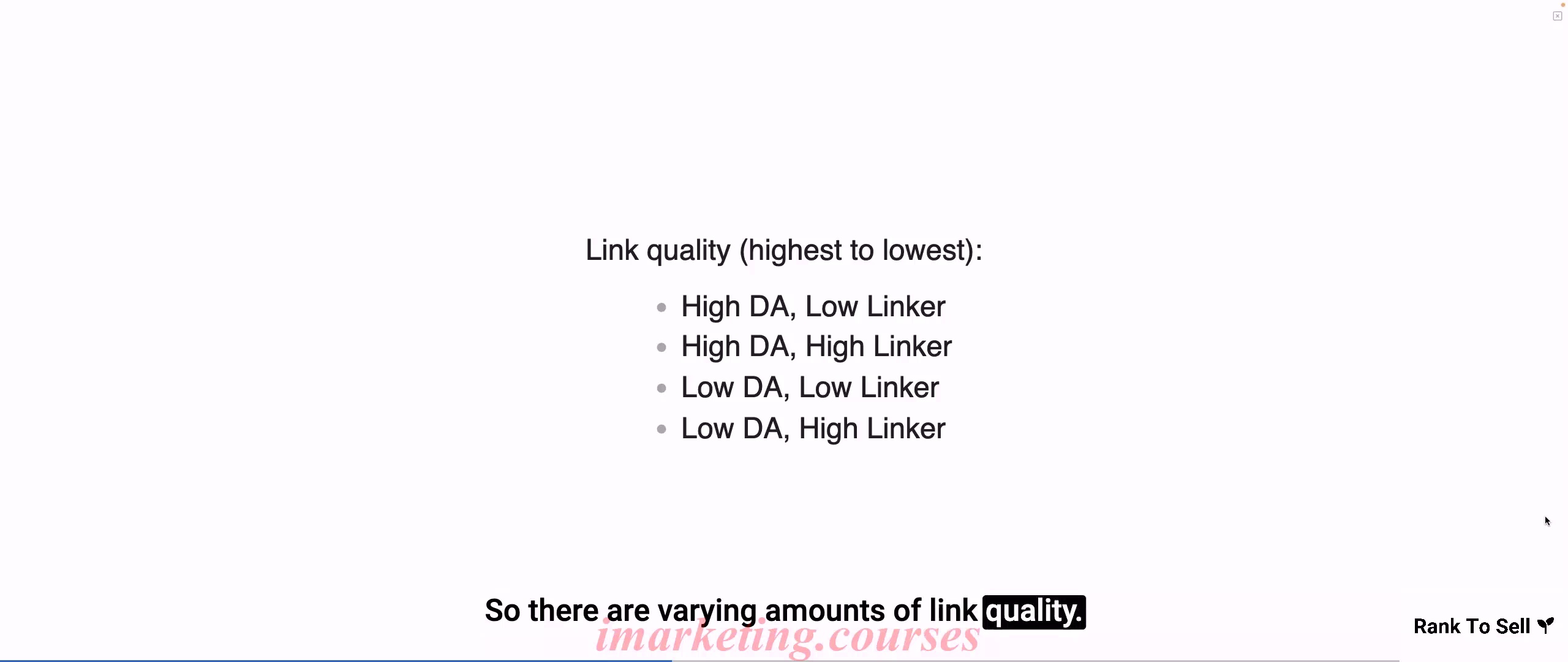
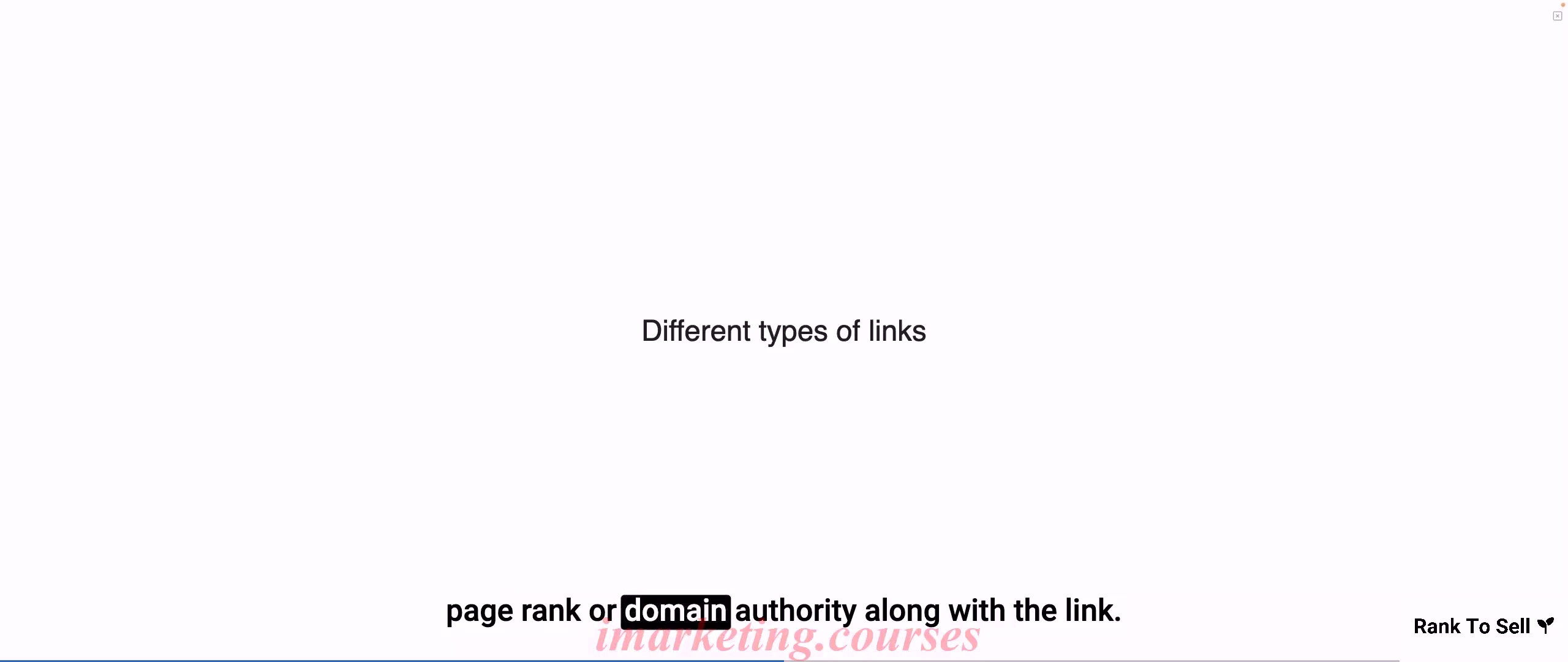
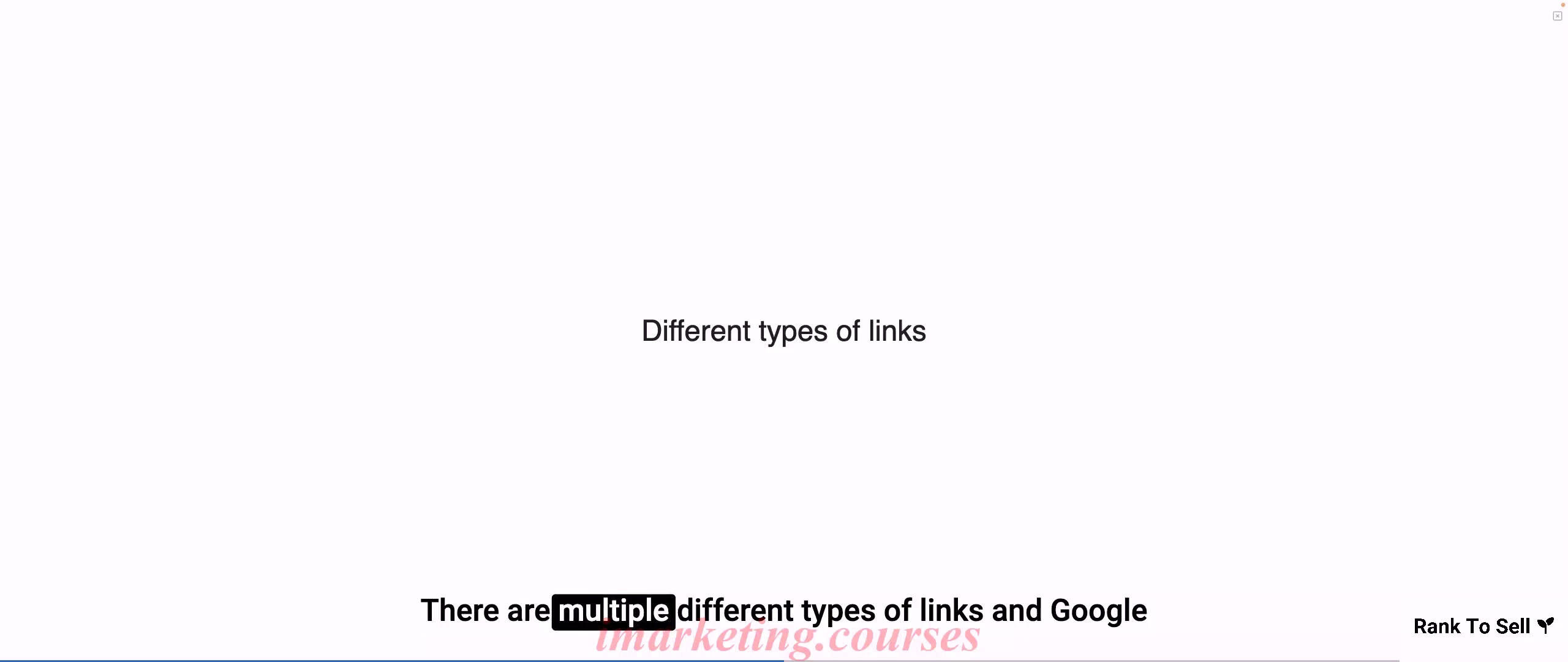
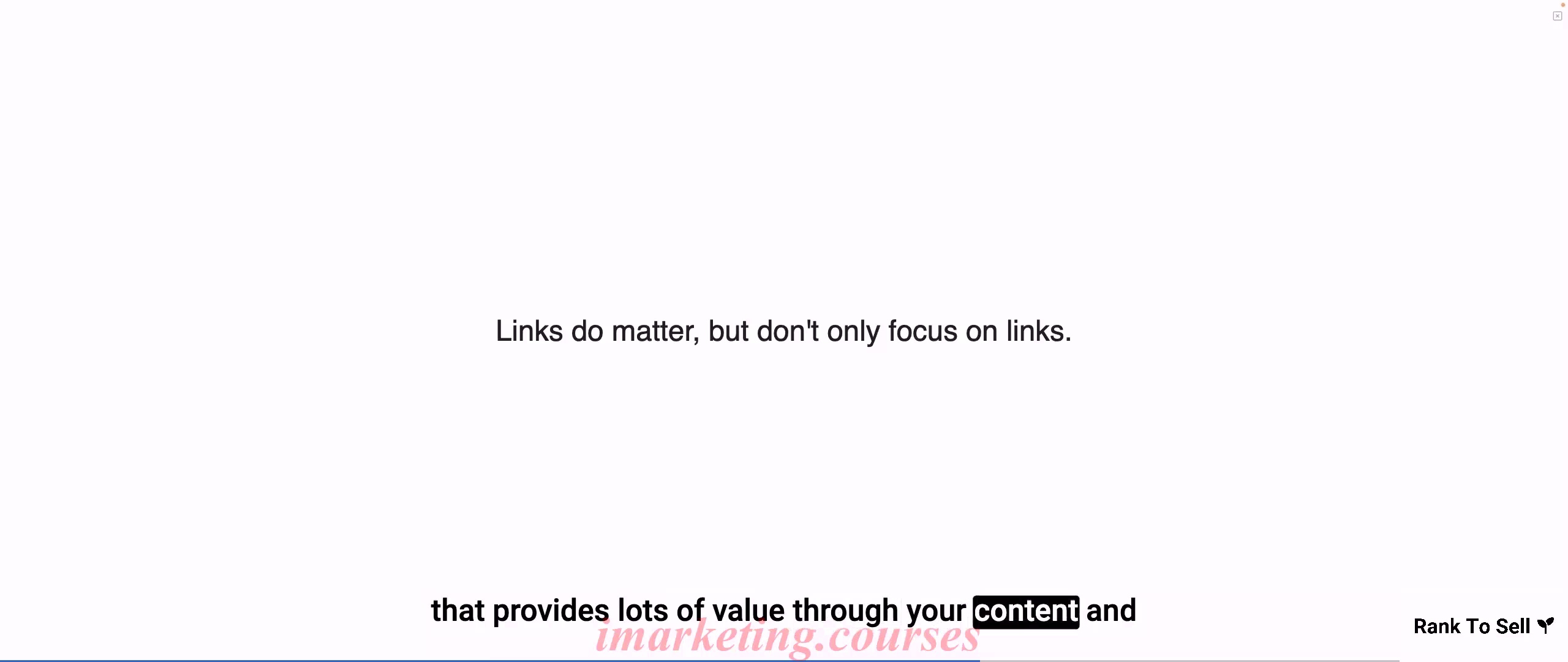
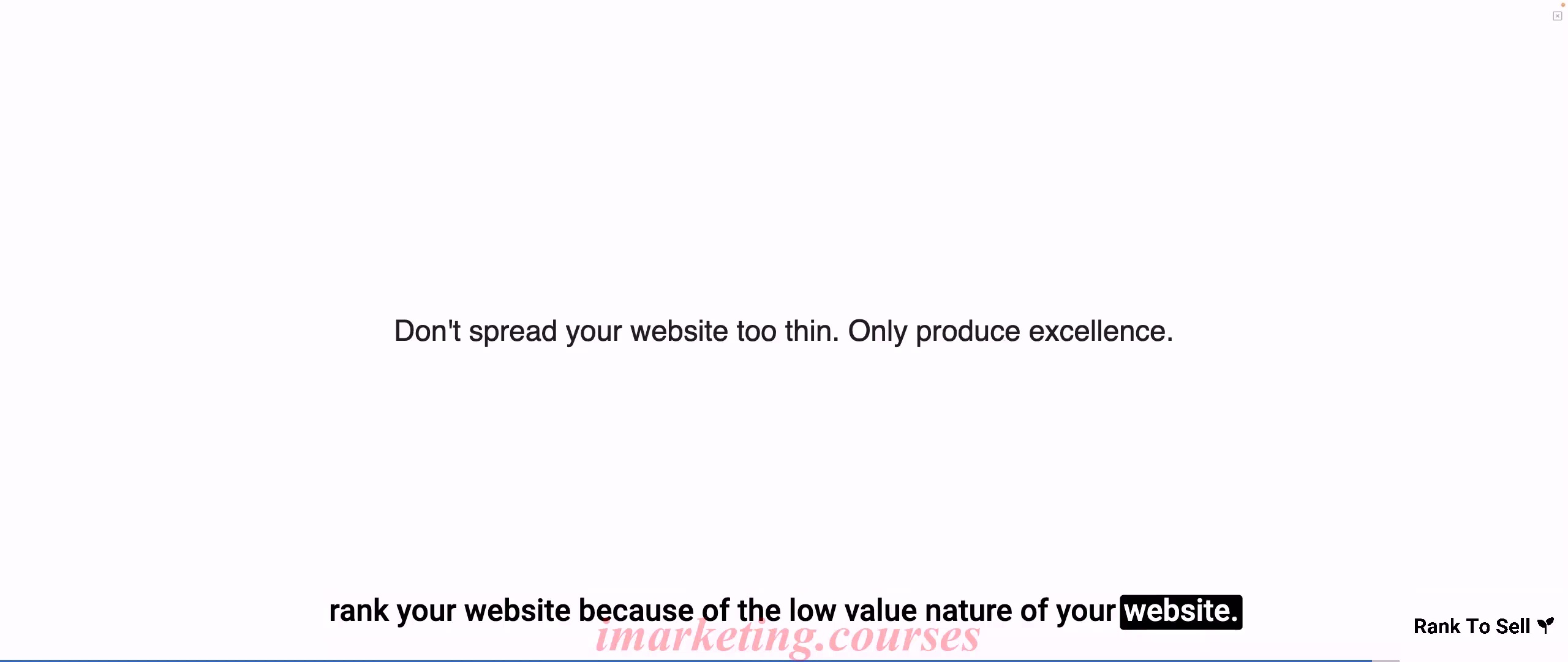
The narrator explains that domain authority is not an official Google ranking factor, but it refers to the trustworthiness of a website based on its backlink profile. Building domain authority involves getting quality backlinks to signal trust and authority to search engines.
The best links come from high authority websites that don't link out to many other sites. Editorial links also carry more weight than sponsored or nofollow links. However, focusing solely on links is less important than providing value through content. Value builds authority over time, allowing new content to rank faster.
Having too many low-quality pages can reduce domain authority. It's best to focus on publishing excellent, helpful content rather than a high quantity of thin content. As domain authority grows, new content will rank faster even without links pointing to it.
.